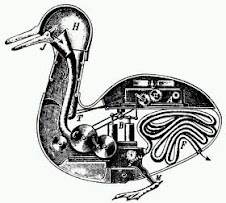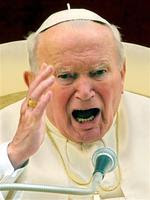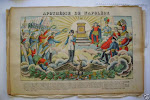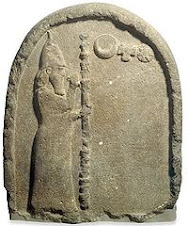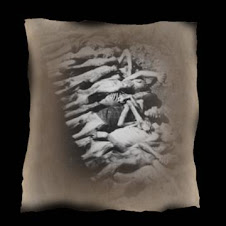Latium Latinus (the Roman form of the Greek Lateinos), and Lateo, “to lie hid,” all alike come from the Chaldee “Lat,” which has the same meaning. This is evident from the name of the fish Latus, which was worshipped along with the Egyptian Minerva, in the city of Latopolis in Egypt, now Esneh, that fish Latus evidently just being another name for the fish-god Dagon. We have seen that Ichthys, or the Fish, was one of the names of Bacchus; and the Assyrian goddess Atergatis, with her son Ichthys is said to have been cast into the lake of Ascalon. That the sun-god Apollo had been known under the name of Lat, may be inferred from the Greek name of his mother-wife Leto, or in Doric, Lato, which is just the feminine of Lat. Dagon was venerated by the Philistines whom the KJV turned into Palestinians. By order of emperor Hadrian the Holy Land was renamed Palestine.
The ancient name of Rome was Saturnia, the city of Saturn. Saturn was the “father of gods”, also called the Father of Zeus (Jupiter) Saturn was also known as Kronos and he was known as the first King of Babylon. Hislop in his The Two Babylons quotes Eusebius who stated that “Saturn or Belus was the first king of Baylon.” Belus, of course is the Greek word for Baal, as is generally known. “It was an essential principle of the Babylonian system that the Sun was or Baal was the only god. - wrote Hislop. Saturn was also known as Lateinos and Lateinos was identified by Virgil as the “child of the Sun”.
It should be reminded here that the Etruscans, called themselves Rasena; and the descendants of the most ancient families always believed that the Rasena had come from the great and ancient city of Resen or RSN, the capital of Aturia in the land of Assyria situated on the great river Tigris. In the country of Ethiopia, where the Pharaohs had granted lands to a group of no less than 240,000 Rasenas, they built the town of Esar – that was the Etruscan word for demigod. From Egypt they had brought many of their sacred rites; for many centuries they used to place Egyptian things and implement in their tombs.
Franz Cumont in his Astrology and Religion Among the Greeks and Romans wrote: “From astronomical speculations the Chaldeans had deduced a whole system of religious dogmas. The sun, set in the midst of the superimposed planets, regulates their harmonious movements. As its heat impels them forward, then draws them back, it is constantly influencing, according to its various aspects, the direction of their course and their action upon the earth...The Babylonian rules wore solar crosses on their chests, exactly, like the Catholic Bishops do.
2 Ki 23:11 And he took away the horses that the King of Judah had given to the sun, at the entering in of the house of the Lord, by the chamber of Nathanmelech the chamberlain, which was in the suburbs, and burned the chariots of the sun with fire. The Catholic translations of Is 27:9 (So that the Asherim and the sun images shall rise no more) avoid the term ‘sun-images’ replacing it by ‘objects of cult’.
At Deuteronomy 17:2-3, we read further about Israelites "whoring after" sun worship and astrotheology: "If there is found among you, within any of your towns which the LORD your God gives you, a man or woman who does what is evil in the sight of the LORD your God, in transgressing his covenant, and has gone and served other gods and worshiped them, or the sun or the moon or any of the host of heaven, which I have forbidden..."
Invicta Roma was the Empire of Sol Invictus or Kosmokrator (Ruler of the Cosmos) and as such was “destined to rule the whole world” (Virgil). When Rome succumbed to Jesus it did not embrace him as a Jewish teacher but as the sun god Helios (Apollo) whose halo used to symbolize divine rank of Roman emperors. For centuries, the Roman propaganda, especially Cicero’s, proclaimed that the Jews were “a nation born to servitude,” like all other conquered “barbarians”. The same author, while popularizing the Pythagorean heliocentrism in his Dream of Scipio speaks of the sun as “the Lord, chief and ruler of the other lights, the Mind and guiding principle of the universe.”
Virgil's Heliocentrism
The Sibylline books have been the source of the inspiration of Virgil; Apollo was believed to have revealed the Sibylline Books which, according to tradition emanated from a Sibyl or trance-medium at Cumae, near Naples (Cp. “they were all filled with the Holy Spirit in the shape of tongues of fire).
Quid faciat laetas segetes, quo sidere terram vertere-
Maecenas, ulmisque vitis conveniat
(Virgil Georgica, 1-2;1-4)
Virgil is saying that the earth is in fact spinning! Virgil identifies the sun as a star amongst many others. How could Virgil be talking about the sun as a star (which is exactly what modern science teaches us).
The works of Classical authors of ancient Greece or Rome were transcribed throughout the middle ages. These copies were made in monasteries, often many hundreds of miles apart from one another, throughout Europe. Yet despite the distances involved and the lack of communication between these diverse centers of culture and learning, no discrepancy has ever been detected between the manuscript copies of Virgil’s works, thereby attesting to their perfect, preservation.
It should also not be forgotten that Virgil’s influence has never waned in Western culture - even among Christians. Indeed, Virgil acted as mentor and guide for the Florentine poet Dante Alighieri (1265-1321 CE) in his The Divine Comedy. Virgil accompanies Dante into the circles of an imagined Hell where, among the schismatics, deceivers and scandalmongers, they see the writhing body of one of the condemned, a certain Mahomet. Inspired by Virgil, Dante gives a vivid and ominous description of this inmate of the Inferno:
“See Mahomet, how he is mutilated. Between his legs all of his red guts hung with the heart, the lungs, the liver, the gall bladder, and the shrivelled sac that asses faeces to the bung.” (Canto XXVIII). Interestingly, Dante's “Jove for mankind crucified” was Vigil's God of his heliocentrism:
Tum pater omnipotens fecundis imbribus Aether
coniugis in gremium laetae descendit, – (Virgil, Georgics II)
Then Aether, sire omnipotent, leaps down
With quickening showers to his glad wife's embrace,
All the ancient nations deified AEther in its imponderable aspect and potency. Virgil calls Jupiter, Pater omnipotens AEther, "the great AEther."The Hindus have also placed it among their deities; under the name of Akasa (the synthesis of AEther). And the author of the Homoiomerian System of philosophy, Anaxagoras of Clazomenae, firmly believed that the spiritual prototypes of all things, as well as their elements, were to be found in the boundless Ether where they were generated, whence they evolved, and whither they returned. Virgil in his Aeneid writes about the pure ether of the soul.
Raining of Light from Heaven
In all rationalistic and materialistic philosophies Heaven becomes impersonal (like impersonal Brahma which became Aristotle's energeia, the substance of God, which inspired the substance of the Nicene Creed) – it is nature and natural process and accordingly the heliocentrism replaces creation with emanation; light as the emanation from the sun becomes the primary form of corporeal matter, which by multiplying itself outward from the center of radiation produces the physical world. In this sense Heraclitus spoke of “all things as an exchange for fire and fire for all things” Similarly Galileo regarded wine as mixture of light and moisture, and the Sages of the Lagado Academy in Guliver's Travels tried to extract light from cucumbers. In one of the early Greek hymns the sun “transforms water into human beings” and only against this philosophical background one could properly understand the “Children of Light” in the Gospel of John “as children born not of natural descent, nor of human decision or a husband's will, but born of sun God” (1:18; see below about Katie King). In the Russian prose epic 'Slovo o pulku Igoreve” of the 12th century, Vladimir and the Russians called themselves the grandchildren of Dazhbog, the god of sun and fire” Dazhbog played a significant part till long after Christianization because of his connection with the fire and the Slavs' worship of the hearth as a sacred place in the house. The Polish name Kupala (a phallic deity) later used in folk ritual in connection with the fire worship, stands for the same idea.
At the heart of both of these understandings of the Descent of the Soul is the Emanation of living streams of "being" and "intelligence" from the first fount of all things; the "First Cause" of all. For simplicity sake let us call this "First Cause" the "Absolute", "The One", or "Ain Soph" by the familiar term "God".In the Egyptian Religion this condition of "non-being" was termed "Nun", and translates as "the deep".
"Water ascends toward the sky in vapors; from the sun it descends in rain, from the rain are born the plants, and from the plants, animals" (Manu, book iii., sloka 76).
One of the earliest forms of Emanation described is expressed in the Great Ennead of Heliopolis in ancient Egypt. This is a hierarch of Divine "god-goddess pairs" which are Emanated from a single source of Being (Nun). It was Plato that introduced this same idea of Emanation to the Greek-speaking world, and his ideas were developed continuously over the 1000 year duration of the Platonic Academy in Athens.
From this One through a process of Emanation from "The One" life pours forth its power and essence in streams, called "rivers of vivification" like the Ganga river in the Hindu Myth, "from on high as far as to the last of things," bringing all forms of life into existence and enouling all forms with more or less of its own mighty being.
The central Sun of the Babylonian myth is a fountain of 'living waters,' healing 'waters' or of healing energy (the Aryan term Brahmah means 'energy'). Ancient wisdom traditions maintain humans, and all other beings in our galaxy, emanate from and share a common home: the Central Sun at the core of our Milky Way galaxy.
The pagan religious traditions of Arabia show great diversity. The Southern Arabia had ‘Athar, the god of thunderstorms and rain. "Two others, the Rig and Athar teach us fraternity, Sheltering under their lustre dispels darkness till eternity" (This poem was written by Labi-Bin-E- Akhtab-Bin-E-Turfa who lived in Arabia around 1850 B.C.)
The god Athar (Ether) inspired the following verse in the Qur'an, which is friendly toward Rome.
"It is He who created the night and the day, and the sun and the moon, all (the celestial bodies) swim along, each in its orbit with its own motion. (21:33)"
Abdullah Yusuf Ali commented on this verse: “...the metaphor of swimming implied in the original words how beautiful is to contemplate the heavenly bodies swimming through space (or ether) in their rounded courses before our gaze.
This global solar religion of Nature is reflected in various languages. Salverte in his Des Sciences Occultes, observed: "Almost all the Tartar princes, trace their genealogy to a celestial virgin, impregnated by a sun-beam, or some equally miraculous means." In India, the mother of Surya, the sun-god, who was born to destroy the enemies of the gods, is said to have become pregnant in this way, a beam of the sun having entered her womb, in consequence of which she brought forth the sun-god.”
The name of Persian sun god Sure is cognate with Chaldean zuhr (“to shine”), zuhro (“the Shiner” cp. Zorro) and, of course zuro (“the seed”) because a beam of light was also an impregnating seed (Cp. Justin Martyr's Logos S[permatikos). The name Pyrisoporus, as aplied to Bacchus, means Ignigena, or the “Seed of Fire”, and Ala-sporos, the “Seed of God”, is just a similar expression formed in the same way.
The Poimandres writer fell into a deep and heavy trance, in which there appeared to him a being who introduced himself as Poimandres (Shepherd of Men), “the Mind of Authority.” Poimandres then shows the mystic a vision, in which he sees a great light and great darkness, respectively reality and matter. From the light comes “a Holy Logos,” ... the “shining Song of God,”: who proceeds from Mind itself...
The name Lingam appears as a name of Shiva in the Shiva Sahasranama where it is translated by Ram Karan Sharma as "(Identifiable as) a symbol of the origin of the Universe. Copernicus's expression “family of stars” belongs to the teachings of the Aryan cosmogony. A few years ago, Father George Coyne, head of the Vatican Observatory Research Group suggested that we might view stars as God's sperm, which is the basic teaching of the Aryan cosmogony. Philo called the thoughts of the Logos logoi spermatikoi and described them as having a role in the production of the cosmos which, he insisted, was brought into being out of non-being by the agency of God. In the Hindu Myth when the desire arose in it (i.e. in the sun god in the shape of linga (phallus) “the creation” or rather emanation or emission (ejaculation) of semen followed. The Christian heretic Justin who envisaged Jesus as ever-existent “seed-sowing Reason” believed that the good God was an erect phallus, like Shiva (Hippolytus, Refutation 5.7.21-22).In the beginning there was sexual desire. John Paul II's Theology of the Body was inspired by this teaching. Like Copernicus, also Kepler believed that the stars were born of the semen of the sun god (disseminated is derived from Latin semen, seed).
Virgil's “quickening showers” became Newton's “precipitations”
Since time immemorial astrology went hand in hand with the theory of emanationism, philosophical and theological theory that saw all of creation as an unwilled, necessary and spontaneous outflow of contingent beings of descending perfection, from an infinite, unchanged primary substance. In conformity with this theory Kepler wrote about “species immateriata” which flows out of the sun, inundates all the planets, including the earth, and sets them in whirling motion. Newton, like Kepler, was influenced by the same Hermetic tradition. He felt that the apparent attraction of tiny bits of paper to a piece of glass that has been rubbed with cloth results from an ethereal effluvium that streams out of the glass and carries the bits of paper back with it. This mechanical philosophy explained apparent attractions away by means of invisible ethereal mechanisms. The ancient heliocentrist, Egyptian pharaoh Akhenaten had himself portrayed sitting in the sun’s rays ending in hands. For him these rays ending in hands had the same meaning as ethereal effluvium had for Newton.
Some of Newton's early ideas derive the aether from the principles of continuity and mixture in a picture surprisingly close to the basic Stoic assumptions:“Perhaps the whole frame of nature may be nothing but various contextures of some certain aetherial spirits and vapours, condensed as it were by precipitation...and after condensation wrought into various forms...Thus perhaps may all things be originated from aether.” In 1887 Albert a. Michelson and Edward W. Morley, conducted an experiment that put an end to the ether concept.
In the Stoic doctrine, which is solar mythology dressed up as philosophy, bodies are made up of two principles, a passive, matter, and an active principle, form; but form itself is corporeal. It is warm vapour (pneuma), or fire, yet fire distinct from the element of this name; it is primitive fashioning fire (pyr technikon), sungod. The often-quoted Stoic sentence, “Nature is an artistically working fire, going on its way to create,” should be reminded in this context. The Vedic god Syria was a solar bull. According to the Assyrians, the bull was born of the sun. There is a long history behind John Bull, the symbol of the Britons.
The following passage presents Pliny's very Copernican heliocentrism:“Upheld by the same vapour between earth and heaven, at definite spaces apart, hang the seven stars which owing to their motion we call 'planets...' And the houris are various contextures of the same aetherial spirits and vapours... The Apollo astronaut Russel Schweikart, a New Ager, of course, (See, Gaia, Evolution and the Significance of Space Exploration, JS Journal, published by International Synergy (December 1987; 2:2, p. 29) “was the first person to walk in space without an umbilical cord to the craft, swept along by the magical, invisible connection of shared momentum,” believes that Gaia may be nearing some sort of threshold analogous to giving birth.
Carl Sagan, a New Ager, a lunatic chasing Kepler’s Lunarians and one of the High Priests of the scientific establishment, expressed the gist of Copernicus’s belief in “family of stars” as follows: “Our ancestors worshiped the sun, and they were far from foolish. It makes good sense to revere the sun and the stars, because we are their children.”
Newton's idea was to explain the force of gravity by the gradually varying degrees of density of the ethereal medium In his letter to Oldenburg before, he says: “But it is not to be supposed that this medium is one uniform matter, but composed partly of the main phlegmatic body of aether, partly of other various aethereal spirits, much after the manner that air is composed of the phlegmatic body of air intermixed with various vapours and exhalations. For the electric and magnetic effluvia, and the gravitating principle seem to argue such variety. The principle of differentiation by mixture propounded here is very similar to that of the Stoics which we would trace back to that of Diogenes of Apollonia. Pneuma, it is true, had gradually become the “fifth element”, identified with aether, and was probably in the course of time detached from its origins and regarded as a simple substance. The Aryan idea of castes (i.e. Darwin's “favoured races”) and Stalin's idea of purges are rooted in such a teaching. But the pure ether of the soul remains (Virgil)
Science/Mysteries.uk: Darwinian Creation by Precipitation
Sextus Empiricus, gives us the reason on which the Pythagoreans and Empedocles based their belief that the fellowship of men is not only with one another and with their gods, but also with animals: for there is one spirit (pneuma) which pervades, like a soul, the whole universe, and which also makes us one with them.” This link between gods, men and animals was observed in the Egyptian Theozoology. Theosophy is a follow up of this Egyptian Theozoology.
The Stoics regarded the pneuma as the generator of physical qualities. Chrysippos in his On Physical State wrote: The physical states are nothing else but spirits, because the bodies are made cohesive by them. And the binding air is the cause for those bound into such a state being imbued with a certain property which is called hardness in iron, solidity in stone, brightness in silver.” (...) Matter, being inert by itself and sluggish, is the substratum of the properties, which are pneumata and air-like tensions giving definite form to those parts of matter in which they reside.” Physis expresses organic structure and psyche the structure of the living being.
Jupiter, the omnipotent Ether of Virgil was the Roman counterpart of Zeus. Cleanthes, Zeno’s successor as head of the Stoic School, emphasizes the religious side of the Stoic doctrine in his HYMN TO ZEUS: “Most glorious and omnipotent Zeus, ruler of Nature, worshiped under many names, by whom all things are governed in accordance with Law, hail to thee! From thee we are born...” Cp. Virgil’s Magnus ab integro saeculorum nascitur ordo; In the Latin tradition the words ‘God’ and ‘Nature’ are interchangeable.
Well, Sir William Crookes, Physicist, chemist and a President of Royal Society, claimed to have seen materialized, by scientific precipitation spirit forms, or spiritual bodies walking and talking during séances He invited the two secretaries of the Royal Society, Professor Stokes and Sharpey, to visit his home to witness the phenomena for themselves – an invitation which neither of them accepted. Sir Crookes himself materialized a spirit whom he named Katie King and described her in such words:
"Round her she made an atmosphere of life;
The very air seemed lighter from her eyes;
They were so soft and beautiful and rife
With all we can imagine of the skies;
Her overpowering presence makes you feel
It would not be idolatry to kneel!"
(See his pamphlet The Last of Katie King, p. 112)
Katie King was the first houri materialized by scientific precipitation on earth!
Darwin, writing to Sir Francis Galton on 23 Jan. 1872, said: “Have you seen Mr. Crookes? I hope to heaven you have, as I for one should feel entire confidence in your conclusion!” In 1874 after reading Crookes’s Notes of an Enquiry into the Phenomena Called Spiritual, Darwin remarked in a letter to Lady Derby, “If you had called here after I had read the article you would have found me a much perplexed man. Cannot disbelieve Mr.Crookes’s statements, nor can believe his results!” Galton did indeed call in Crookes, and he was soon able to report to Darwin, in a letter dated March 28, 1872: “Crookes is working deliberately and well.” Three weeks later Galton wrote: “Crookes, I am sure so far as it is just for me to give an opinion, is thoroughly scientific in his procedure. I am convinced; the affair is no matter of vulgar legerdemain.”
One of the early pioneers of Spiritualist inquiry was the Ghost Society at the University of Cambridge, England. The Founders of Psychical Research records the stated objective of the Cambridge Ghost Society: "In 1851, was founded at Cambridge a Society to 'conduct a serious and earnest inquiry into the nature of the phenomena vaguely called supernatural,' and a number of distinguished persons became members."
Col. Henry S. Olcott, one of the founders of Theosophical Society together with his Russian-born wife Helena Blavatsky who actively pursued the “whoredom of spiritualism” first came on the public horizon in 1874 as a journalist sent by the New York Graphic to investigate and write up alleged spiritualistic phenomena occurring in the Eddy family in Chittenden, Vt. He was there from August to December 1874, wrote his letters to his paper, and afterward (early in 1875) published his book called People from the Other World. (Now they turned into aliens).This included besides the Eddy affair, the Katie King business of 1874-5 which deceived Ch. Darwin so sadly. It is one of the best ghost books extant, full of spectral pictures (there was a ghostly fiction named John King, at full length floating in space, holding up a peculiar globe of light shaped like a glass decanter. This picture was taken in Europe and in Russia), not a word of truth in the text and redolent with the flavor of gullibility. Olcott knew that every phenomenon he described was fraudulent, and when somebody proposed to show up the Eddy tricks in their true light, Olcott begged for God's (sic!) sake not to have it done because 'it would injure the sale of his book.'
In 1874, Walt Whitman was invited to write a poem about the Spiritualism movement, to which he responded, "It seems to me nearly altogether a poor, cheap, crude humbug." W. Whitman believed in Biblical geocentrism.
The Richard Dawkins Delusion
THE SCIENTIFIC PROOF OF SURVIVAL AFTER DEATH --We have had the experimental proof of survival after death ever since Sir William Crookes published the results of his experiments in the leading scientific journal of his day - The Quarterly Journal of Science - in 1874. These were repeatable experiments under laboratory conditions. International teams of scientists then repeated the experiments and obtained the same results. People who had once lived on earth came back and proved to these scientific teams that they had conquered death and were still very much alive. This is what Professor Charles Richet, the French Nobel Laureate for medical science, said about the experiments: "There is ample proof that experimental materialisations should take definite rank as a scientific fact." (Michael Roll, The Scientific Proof of Survival after Death) Somebody, would materialize Jesus Christ, please.
Saturday, July 31, 2010
Thursday, July 29, 2010
'We Have Learned Nothing from the Genome'
SPIEGEL Interview with Craig Venter
In a SPIEGEL interview, genetic scientist Craig Venter discusses the 10 years he spent sequencing the human genome, why we have learned so little from it a decade on and the potential for mass production of artificial life forms that could be used to produce fuels and other resources.
SPIEGEL: Mr. Venter, when the elite among gene researchers undertook the decoding of the human genome, you were their greatest enemy. They called you "Frankenstein," "blood sucker," "Darth Venter" and even "asshole." Why do you attract so much hostility?
Venter: Well, nobody likes to be beaten -- by superior intelligence, planning and technology. That gets people upset.
SPIEGEL: Every area of science is competitive. But it doesn't lead to that kind of hostility in all areas.
Venter: The human genome project was completely different, it was supposed to be the biggest thing in the history of biological sciences. Billions in government funding for a single project -- we had never seen anything like that before in biology. And then a single person comes along and beats scientists who have been working on it for years. It is no wonder they didn't like that.
SPIEGEL: Wasn't it more the case that your opponents were afraid that you, as a profit-oriented entrepreneur, would make the human genome your own private property?
Venter: That is totally absurd; and you know it. Initially, Francis Collins and the other people on the Human Genome Project claimed that my methods would never work. When they started to realize that they were wrong, they began personal attacks against me and made up these things about the ownership of the genome. It was all absurd.
SPIEGEL: So it was all just propaganda?
Venter: At the end of the day, it is an argument over nothing. But this battle between common good and commerce -- that is the kind of story that sells newspapers.
SPIEGEL: Was the importance of gene patents, which fueled the dispute, exaggerated?
Venter: First of all, nobody has made any serious money off patents on human genes except patent attorneys. Second, I do not hold any patents on human genes. You can do a patent search. Then you can convince yourself.
SPIEGEL: On June 26, 2000, you had a major event -- you met with Francis Collins at the White House …
Venter: … yeah, it was obviously a big historic event. It was pretty stunning, making an announcement at the White House to the entire world. It was a big triumph for me and my team because it proved that we had won.
SPIEGEL: At the time, none of you had won. Nobel Prize recipient John Sulston, one of the researchers of the government-funded genome project wrote …
Venter: … What was his quote? That he and his people were a bunch of phonies who had nothing?
SPIEGEL: In essence, he wrote that you both had nothing.
Venter: He had no idea what we had. Sulston has proven he is not the most credible source on anything other than his own data. He said they were a bunch of phonies, we have to take him at his word on that.
SPIEGEL: It seems to have been the only time in history that a new scientific discovery was announced officially by the government. How did that unusual agreement in the White House take shape?
Venter: It was a political compromise because the people at the public Human Genome Project were afraid we would announce what we had. And we were afraid they would use the White House to make it look like they had won.
SPIEGEL: It appeared at the time that you had agreed to be undecided. Do you now view yourself as the winner of the race?
Venter: I don't think it really matters.
SPIEGEL: The New York Times later declared the public Human Genome Project to be the victor. Can you really claim that you don't care?
Venter: Oh, the New York Times! How do you define the "winner" in this case? What is decisive is that it is our data that is in the databases -- not the data the consortium put together back then.
SPIEGEL: The genome project has been called the Manhattan Project or Moon Landing of its era. It has also been said that knowledge of the genes will change the future of humanity and become a "main driver of the world economy."
Venter: Who said that? I didn't. That was the people at the consortium.
SPIEGEL: You're wrong. You made all those statements in an interview with DER SPIEGEL in 1998.
Venter: Really? Those are Francis Collins' lines. So I may have said that that's how he describes it. I, on the other hand, have always said, "This is a race from the starting line to the finish."
SPIEGEL: The genome project hasn't just raised hopes -- but also worries. Do you understand those concerns?
Venter: Yes. There are two groups of people. People either want to know the information or they prefer to live like an ostrich with their head in the sand, not knowing anything. The fear is based on the ill-founded belief that those who know the DNA sequence also know every aspect of life. This nonsense has been spread by the same geneticists who were afraid of the commercialization of this stuff. From the time of the first few discoveries of gene defects -- Huntington's disease, for example, everybody thought that if you knew your genome, you would know when you would die and what you would die from. That is nonsense.
SPIEGEL: So the significance of the genome isn't so great after all?
Venter: Not at all. I can tell you from my own experience. I put my own genome on the Internet. People had the notion this was the scariest thing out there. But what happened? Nothing.
SPIEGEL: Nevertheless, Jim Watson, the co-discoverer of the DNA double helix, has said he doesn't want to know which variant of the so-called ApoE gene he has -- it could say something about his risk for developing Alzheimer's, and he's afraid of that …
Venter: That was silliness. At that age? Watson is over 80.
SPIEGEL: Are you interested in finding out what ApoE variant you have?
Venter: I know it. And according to it, I have a slightly increased risk for Alzheimer's disease. But it impresses me little because I could have dozens of other genes that counteract it. Because we do not know that, this information is meaningless.
'We Couldn't Even Be Certain from my Genome What My Eye Color Was'
SPIEGEL: And what about the fears about the abuse of gene data through insurers or employers, for example? Do you see that as sheer hysteria?
Venter: Abuse is not a question of whether the data is available. It is an issue of laws. You can't do anything to change the availability of genetic data. Look at this bottle that you have touched -- that's all I need to obtain your entire genetic information.
SPIEGEL: How much would you be able to learn about us by doing so?
Venter: If anything, we don't really know how to read the genome and it can't tell us very much right now. So what's the ethical debate about?
SPIEGEL: The decoding of your personal genome has so far revealed little more than the fact that your ear wax tends to be moist.
Venter: That's what you say. And what else have I learned from my genome? Very little. We couldn't even be certain from my genome what my eye color was. Isn't that sad? Everyone was looking for miracle 'yes/no' answers in the genome. "Yes, you'll have cancer." Or "No, you won't have cancer." But that's just not the way it is.
SPIEGEL: So the Human Genome Project has had very little medical benefits so far?
Venter: Close to zero to put it precisely.
SPIEGEL: Did it at least provide us with some new knowledge?
Venter: It certainly has. Eleven years ago, we didn't even know how many genes humans have. Many estimated that number at 100,000, and some went as high as 300,000. We made a lot of enemies when we claimed that there appeared to be considerably fewer -- probably closer to the neighborhood of 40,000! And then we found out that there are only half as many. I was just in Stockholm for the 200th anniversary of the Karolinska Institute. The first presentation was about the many achievements the decoding of the genome has brought. Then I spoke and said that this century will be remembered for how little, and not how much, happened in this field.
SPIEGEL: Why is it taking so long for the results of genome research to be applied in medicine?
Venter: Because we have, in truth, learned nothing from the genome other than probabilities. How does a 1 or 3 percent increased risk for something translate into the clinic? It is useless information.
SPIEGEL: There are hundreds of hereditary diseases that can be traced to defects in individual genes. You can determine a lot more than just probabilities through them. But that still hasn't led to a flood of new treatments.
Venter: There were false expectations. Take Ataxia telangiectasia, for example, a horrible disease. The nervous system degenerates, and people who have it often die in their early teens. The cause is a defect in a single gene, but it is a developmental gene. If your body is built in the wrong way, then you can't just take a magic pill to rebuild it. If your brain is wired wrong, then it is wired wrong.
SPIEGEL: Who is to blame for those false expectations?
Venter: We were simply always looking at single genes because they were the only genes we had. When people lose their keys at night, they look under the lamp post. Why? Because that's where you can still see something.
SPIEGEL: But the keys are really located in the dark?
Venter: Exactly. Why did people think there were so many human genes? It's because they thought there was going to be one gene for each human trait. And if you want to cure greed, you change the greed gene, right? Or the envy gene, which is probably far more dangerous. But it turns out that we're pretty complex. If you want to find out why someone gets Alzheimer's or cancer, then it is not enough to look at one gene. To do so, we have to have the whole picture. It's like saying you want to explore Valencia and the only thing you can see is this table. You see a little rust, but that tells you nothing about Valencia other than that the air is maybe salty. That's where we are with the genome. We know nothing.
SPIEGEL: Do you think there will be a time when you can extract all this information to yield real medical results?
Venter: For that to happen we need a lot more information: Information about your body's chemistry, your physiology, your complete medical history, your brain and your entire life. We would need to do that a million times on different people and correlate that data with their genetic information.
SPIEGEL: Will that lead in the end to the kind of personalized medicine that genetic researchers have always touted? Each person would get his or her own personal treatment that is tailored precisely to that person's genetic make-up?
Venter: That was another one of these silly naïve notions that was out there. It's not, 'Oh, we know your genome, we're going to make this drug for you.' That will never happen. It is more important that you use the information in the genome about your personal risks and reduce them through intelligent behavior.
SPIEGEL: You have complained about how naïve genome researchers were in the beginning. Will future generations eventually make fun of us in the same way for how naïve we still are today?
Venter: Only time will tell. Nevertheless, we now have what is going to be one of the most important tools for interpreting the human genome: the first synthetic cell. It will enable us to ask questions that would have been inaccessible before.
SPIEGEL: When no progress was made through the reading of the genome, you shifted to rewriting it. You sequenced the entire genome of a bacteria and used it in another cell. How is the microbe you created doing today?
Venter: It's sitting in a freezer, doing extremely well. We'll keep it for the historians.
SPIEGEL: You stored a code in the genome of this cell. Has anyone decoded it?
Venter: Yes, it is the first genome in the world to include an e-mail address. So far, 50 scientists have cracked the code and answered us.
'We Don't Need Any More Neanderthals on the Planet'
SPIEGEL: Many fear what might happen if humans craft new life forms. They repeatedly say that you are playing God …
Venter: Yes, and I find them frightening. I can read your genome, you know? Nobody's been able to do that in history before. But that is not about God-like powers, it's about scientific power. The real problem is that the understanding of science in our society is so shallow. In the future, if we want to have enough water, enough food and enough energy without totally destroying our planet, then we will have to be dependent on good science.
SPIEGEL: Some scientist don't rule out a belief in God. Francis Collins, for example …
Venter: … That's his issue to reconcile, not mine. For me, it's either faith or science - you can't have both.
SPIEGEL: So you don't consider Collins to be a true scientist?
Venter: Let's just say he's a government administrator.
SPIEGEL: When can we anticipate seeing the next tailor-made microbes from your laboratory?
Venter: Well, the goal is multifold. We have to start by creating minimal cells. A human cell is too complex -- we have no idea how any human cell works. We don't even know how the simplest bacterial cell works. We want to learn what the minimum cellular components are, so we're going to be taking out all the non-essential genes. But we're also trying to design new life forms for energy production, capturing carbon dioxide or to produce chemicals.
SPIEGEL: Wouldn't it be easier to modify existing bacteria using the established methods of biotechnology?
Venter: It isn't that simple. For example, there is no other way of creating a minimal cell. You can only add or take out genes at will if you have built the genome from scratch.
SPIEGEL: How long does it take to create such new forms of cells?
Venter: Right now we have the technology to make several a day, and the goal is to make a million a day.
SPIEGEL: How long will it be until the life forms you have created start producing fuel for our cars?
Venter: Not only gasoline. Plastic, asphalt, heating oil: Everything that we make from oil will at some point be made by bacteria or other cells. Whether that is in five, 10 or 20 years is unclear. Why don't we have fuel now other than alcohol from microbes? It's because nothing evolved that can produce great amounts of biofuel out of CO2. That's why we have to make it.
SPIEGEL: ExxonMobile, at the very least, appears to be convinced by your vision …
Venter: … yes, they are investing $600 million in the project, with half going to our partnership. It's a good round number. It's the same money that PerkinElmer gave me to decode the human genome. With it, we sequenced the human genome in nine months instead of many, many years. The public money that flowed into the Human Genome Project, above all, created an enormous, inflexible bureaucracy. And it is only because of private money that we can now sail across the ocean with this sailboat and discover 40 million genes -- there are only 41 million genes known to all of science. All you need are a few innovative ideas and independent funding to allow you to do things that other people can only dream about.
SPIEGEL: It took eight years from the time the first bacterial genome was decoded until the human genome was completed. How much time will elapse between the creation of the first synthetic bacteria and the creation of the first synthetic human?
Venter: There is currently no reason for us to synthesize human cells. I am, for example, a fan of the work that was done a short time ago that led to the decoding of the Neanderthal genome. But we don't need any more Neanderthals on the planet, right? We already have enough of them.
SPIEGEL: Mr. Venter, we thank you for this interview.
Interview conducted by Rafaela von Bredow and Johann Grolle
In a SPIEGEL interview, genetic scientist Craig Venter discusses the 10 years he spent sequencing the human genome, why we have learned so little from it a decade on and the potential for mass production of artificial life forms that could be used to produce fuels and other resources.
SPIEGEL: Mr. Venter, when the elite among gene researchers undertook the decoding of the human genome, you were their greatest enemy. They called you "Frankenstein," "blood sucker," "Darth Venter" and even "asshole." Why do you attract so much hostility?
Venter: Well, nobody likes to be beaten -- by superior intelligence, planning and technology. That gets people upset.
SPIEGEL: Every area of science is competitive. But it doesn't lead to that kind of hostility in all areas.
Venter: The human genome project was completely different, it was supposed to be the biggest thing in the history of biological sciences. Billions in government funding for a single project -- we had never seen anything like that before in biology. And then a single person comes along and beats scientists who have been working on it for years. It is no wonder they didn't like that.
SPIEGEL: Wasn't it more the case that your opponents were afraid that you, as a profit-oriented entrepreneur, would make the human genome your own private property?
Venter: That is totally absurd; and you know it. Initially, Francis Collins and the other people on the Human Genome Project claimed that my methods would never work. When they started to realize that they were wrong, they began personal attacks against me and made up these things about the ownership of the genome. It was all absurd.
SPIEGEL: So it was all just propaganda?
Venter: At the end of the day, it is an argument over nothing. But this battle between common good and commerce -- that is the kind of story that sells newspapers.
SPIEGEL: Was the importance of gene patents, which fueled the dispute, exaggerated?
Venter: First of all, nobody has made any serious money off patents on human genes except patent attorneys. Second, I do not hold any patents on human genes. You can do a patent search. Then you can convince yourself.
SPIEGEL: On June 26, 2000, you had a major event -- you met with Francis Collins at the White House …
Venter: … yeah, it was obviously a big historic event. It was pretty stunning, making an announcement at the White House to the entire world. It was a big triumph for me and my team because it proved that we had won.
SPIEGEL: At the time, none of you had won. Nobel Prize recipient John Sulston, one of the researchers of the government-funded genome project wrote …
Venter: … What was his quote? That he and his people were a bunch of phonies who had nothing?
SPIEGEL: In essence, he wrote that you both had nothing.
Venter: He had no idea what we had. Sulston has proven he is not the most credible source on anything other than his own data. He said they were a bunch of phonies, we have to take him at his word on that.
SPIEGEL: It seems to have been the only time in history that a new scientific discovery was announced officially by the government. How did that unusual agreement in the White House take shape?
Venter: It was a political compromise because the people at the public Human Genome Project were afraid we would announce what we had. And we were afraid they would use the White House to make it look like they had won.
SPIEGEL: It appeared at the time that you had agreed to be undecided. Do you now view yourself as the winner of the race?
Venter: I don't think it really matters.
SPIEGEL: The New York Times later declared the public Human Genome Project to be the victor. Can you really claim that you don't care?
Venter: Oh, the New York Times! How do you define the "winner" in this case? What is decisive is that it is our data that is in the databases -- not the data the consortium put together back then.
SPIEGEL: The genome project has been called the Manhattan Project or Moon Landing of its era. It has also been said that knowledge of the genes will change the future of humanity and become a "main driver of the world economy."
Venter: Who said that? I didn't. That was the people at the consortium.
SPIEGEL: You're wrong. You made all those statements in an interview with DER SPIEGEL in 1998.
Venter: Really? Those are Francis Collins' lines. So I may have said that that's how he describes it. I, on the other hand, have always said, "This is a race from the starting line to the finish."
SPIEGEL: The genome project hasn't just raised hopes -- but also worries. Do you understand those concerns?
Venter: Yes. There are two groups of people. People either want to know the information or they prefer to live like an ostrich with their head in the sand, not knowing anything. The fear is based on the ill-founded belief that those who know the DNA sequence also know every aspect of life. This nonsense has been spread by the same geneticists who were afraid of the commercialization of this stuff. From the time of the first few discoveries of gene defects -- Huntington's disease, for example, everybody thought that if you knew your genome, you would know when you would die and what you would die from. That is nonsense.
SPIEGEL: So the significance of the genome isn't so great after all?
Venter: Not at all. I can tell you from my own experience. I put my own genome on the Internet. People had the notion this was the scariest thing out there. But what happened? Nothing.
SPIEGEL: Nevertheless, Jim Watson, the co-discoverer of the DNA double helix, has said he doesn't want to know which variant of the so-called ApoE gene he has -- it could say something about his risk for developing Alzheimer's, and he's afraid of that …
Venter: That was silliness. At that age? Watson is over 80.
SPIEGEL: Are you interested in finding out what ApoE variant you have?
Venter: I know it. And according to it, I have a slightly increased risk for Alzheimer's disease. But it impresses me little because I could have dozens of other genes that counteract it. Because we do not know that, this information is meaningless.
'We Couldn't Even Be Certain from my Genome What My Eye Color Was'
SPIEGEL: And what about the fears about the abuse of gene data through insurers or employers, for example? Do you see that as sheer hysteria?
Venter: Abuse is not a question of whether the data is available. It is an issue of laws. You can't do anything to change the availability of genetic data. Look at this bottle that you have touched -- that's all I need to obtain your entire genetic information.
SPIEGEL: How much would you be able to learn about us by doing so?
Venter: If anything, we don't really know how to read the genome and it can't tell us very much right now. So what's the ethical debate about?
SPIEGEL: The decoding of your personal genome has so far revealed little more than the fact that your ear wax tends to be moist.
Venter: That's what you say. And what else have I learned from my genome? Very little. We couldn't even be certain from my genome what my eye color was. Isn't that sad? Everyone was looking for miracle 'yes/no' answers in the genome. "Yes, you'll have cancer." Or "No, you won't have cancer." But that's just not the way it is.
SPIEGEL: So the Human Genome Project has had very little medical benefits so far?
Venter: Close to zero to put it precisely.
SPIEGEL: Did it at least provide us with some new knowledge?
Venter: It certainly has. Eleven years ago, we didn't even know how many genes humans have. Many estimated that number at 100,000, and some went as high as 300,000. We made a lot of enemies when we claimed that there appeared to be considerably fewer -- probably closer to the neighborhood of 40,000! And then we found out that there are only half as many. I was just in Stockholm for the 200th anniversary of the Karolinska Institute. The first presentation was about the many achievements the decoding of the genome has brought. Then I spoke and said that this century will be remembered for how little, and not how much, happened in this field.
SPIEGEL: Why is it taking so long for the results of genome research to be applied in medicine?
Venter: Because we have, in truth, learned nothing from the genome other than probabilities. How does a 1 or 3 percent increased risk for something translate into the clinic? It is useless information.
SPIEGEL: There are hundreds of hereditary diseases that can be traced to defects in individual genes. You can determine a lot more than just probabilities through them. But that still hasn't led to a flood of new treatments.
Venter: There were false expectations. Take Ataxia telangiectasia, for example, a horrible disease. The nervous system degenerates, and people who have it often die in their early teens. The cause is a defect in a single gene, but it is a developmental gene. If your body is built in the wrong way, then you can't just take a magic pill to rebuild it. If your brain is wired wrong, then it is wired wrong.
SPIEGEL: Who is to blame for those false expectations?
Venter: We were simply always looking at single genes because they were the only genes we had. When people lose their keys at night, they look under the lamp post. Why? Because that's where you can still see something.
SPIEGEL: But the keys are really located in the dark?
Venter: Exactly. Why did people think there were so many human genes? It's because they thought there was going to be one gene for each human trait. And if you want to cure greed, you change the greed gene, right? Or the envy gene, which is probably far more dangerous. But it turns out that we're pretty complex. If you want to find out why someone gets Alzheimer's or cancer, then it is not enough to look at one gene. To do so, we have to have the whole picture. It's like saying you want to explore Valencia and the only thing you can see is this table. You see a little rust, but that tells you nothing about Valencia other than that the air is maybe salty. That's where we are with the genome. We know nothing.
SPIEGEL: Do you think there will be a time when you can extract all this information to yield real medical results?
Venter: For that to happen we need a lot more information: Information about your body's chemistry, your physiology, your complete medical history, your brain and your entire life. We would need to do that a million times on different people and correlate that data with their genetic information.
SPIEGEL: Will that lead in the end to the kind of personalized medicine that genetic researchers have always touted? Each person would get his or her own personal treatment that is tailored precisely to that person's genetic make-up?
Venter: That was another one of these silly naïve notions that was out there. It's not, 'Oh, we know your genome, we're going to make this drug for you.' That will never happen. It is more important that you use the information in the genome about your personal risks and reduce them through intelligent behavior.
SPIEGEL: You have complained about how naïve genome researchers were in the beginning. Will future generations eventually make fun of us in the same way for how naïve we still are today?
Venter: Only time will tell. Nevertheless, we now have what is going to be one of the most important tools for interpreting the human genome: the first synthetic cell. It will enable us to ask questions that would have been inaccessible before.
SPIEGEL: When no progress was made through the reading of the genome, you shifted to rewriting it. You sequenced the entire genome of a bacteria and used it in another cell. How is the microbe you created doing today?
Venter: It's sitting in a freezer, doing extremely well. We'll keep it for the historians.
SPIEGEL: You stored a code in the genome of this cell. Has anyone decoded it?
Venter: Yes, it is the first genome in the world to include an e-mail address. So far, 50 scientists have cracked the code and answered us.
'We Don't Need Any More Neanderthals on the Planet'
SPIEGEL: Many fear what might happen if humans craft new life forms. They repeatedly say that you are playing God …
Venter: Yes, and I find them frightening. I can read your genome, you know? Nobody's been able to do that in history before. But that is not about God-like powers, it's about scientific power. The real problem is that the understanding of science in our society is so shallow. In the future, if we want to have enough water, enough food and enough energy without totally destroying our planet, then we will have to be dependent on good science.
SPIEGEL: Some scientist don't rule out a belief in God. Francis Collins, for example …
Venter: … That's his issue to reconcile, not mine. For me, it's either faith or science - you can't have both.
SPIEGEL: So you don't consider Collins to be a true scientist?
Venter: Let's just say he's a government administrator.
SPIEGEL: When can we anticipate seeing the next tailor-made microbes from your laboratory?
Venter: Well, the goal is multifold. We have to start by creating minimal cells. A human cell is too complex -- we have no idea how any human cell works. We don't even know how the simplest bacterial cell works. We want to learn what the minimum cellular components are, so we're going to be taking out all the non-essential genes. But we're also trying to design new life forms for energy production, capturing carbon dioxide or to produce chemicals.
SPIEGEL: Wouldn't it be easier to modify existing bacteria using the established methods of biotechnology?
Venter: It isn't that simple. For example, there is no other way of creating a minimal cell. You can only add or take out genes at will if you have built the genome from scratch.
SPIEGEL: How long does it take to create such new forms of cells?
Venter: Right now we have the technology to make several a day, and the goal is to make a million a day.
SPIEGEL: How long will it be until the life forms you have created start producing fuel for our cars?
Venter: Not only gasoline. Plastic, asphalt, heating oil: Everything that we make from oil will at some point be made by bacteria or other cells. Whether that is in five, 10 or 20 years is unclear. Why don't we have fuel now other than alcohol from microbes? It's because nothing evolved that can produce great amounts of biofuel out of CO2. That's why we have to make it.
SPIEGEL: ExxonMobile, at the very least, appears to be convinced by your vision …
Venter: … yes, they are investing $600 million in the project, with half going to our partnership. It's a good round number. It's the same money that PerkinElmer gave me to decode the human genome. With it, we sequenced the human genome in nine months instead of many, many years. The public money that flowed into the Human Genome Project, above all, created an enormous, inflexible bureaucracy. And it is only because of private money that we can now sail across the ocean with this sailboat and discover 40 million genes -- there are only 41 million genes known to all of science. All you need are a few innovative ideas and independent funding to allow you to do things that other people can only dream about.
SPIEGEL: It took eight years from the time the first bacterial genome was decoded until the human genome was completed. How much time will elapse between the creation of the first synthetic bacteria and the creation of the first synthetic human?
Venter: There is currently no reason for us to synthesize human cells. I am, for example, a fan of the work that was done a short time ago that led to the decoding of the Neanderthal genome. But we don't need any more Neanderthals on the planet, right? We already have enough of them.
SPIEGEL: Mr. Venter, we thank you for this interview.
Interview conducted by Rafaela von Bredow and Johann Grolle
Thursday, July 15, 2010
John Paul II's French God of Science
“The only wise men in the world are philosophers”
“Nothing is known better by knowing theology.”
academic proposition proclaimed at the Paris University and condemned by the Church in 1277
According to Pierre Duhem, a 19th-century French historian, this condemnation forced philosophers to free themselves from the fondness for Aristotle's theses and to consioder alternatives. For him, the date 1277 thus marked the beginning of modern (i.e. non- or anti-Aristotelian), i.e. Heliocentric science.
In mid-fortheenth century Paris, Jean Buridan prepared the philosophical deism by his hypothese of impetus explaining rationally the unceasing rotation of starry sphere; in the absence of resistance, God's initial impetus at creation is preserved and requires no further intervention. His younger contemporary Nicole Oresme (later a bishop) offerd a list of arguments for the possible rotation of the earth; he concluded that no available empirical or rational evidence could determine whether ot not it moved, a dogma which later shaped Galileo's reasoning. Well, according to the Bible stopping the sun in its course, or the earth in its spinning would make the daylight last longer. Like his predecessor, a certain Aristarchus, he apodeiknum i i.e. dogmatically declared the earth moves. Cicero called all statements of speculative philosophy: dogmata.
Incidentally, Buridan's idea of impetus resonates in Darwin's belief that “a world populated by natural law” was “far grander” than one in which the Creator constantly interferes. The most influential Arab philosopher Abu Hamid al-Ghazali argued... against very idea of laws of nature, on the ground that any such laws would put God's hands in chains.
Jean Buridan's impetus hypothese anticipated what came to be known as a “clockwork universe” (bearing the “clockwork oranges”) i.e. a perfect machine, with its gears governed by the laws of physics. And usually , those who, like Thomas H. Greer, in his A Brief History of the Western World proclaim that “the hand of God, which once kept the heavenluy bodies in their orbits, was replaced by universal gravitation” seem to ignore that Newton flatly refused to speak of the world as a clockwork that runs on its own, without any need for ongoing divine governance. It was the French philosophes of the 18th century, who following in the footsteps of Voltaire created their own view of Newton as the apotheosis of the kind of secular reason that they advanced to replace Christianity not knowing or intentionally ignoring that Newton in his paper De Aere et Aethere identified gravity with the spiritual body of Jesus Christ.
Cyrano de Bergerac (1619-1655) associated pre-Copernican geocentrism with “the insupportable arrogance of Mankinde, which fancies that Nature was only created to serve it.”. The science popularizer Bernard le Bouvier de Fontenelle's Discourse if the Plurality of Worlds (1686) complimented Copernicus – who takes the earth and throws it out of the center of the World – for his “design was to abate the vanity of men who had thrust themselves into the chief place of the Universe.” This interpretation became the standard and apparently unquestioned version of the Enlightenment
For Darwin, It was “more humble” to have apes in our family tree, to believe that savages and civilized people alike were “created from animals.” Adam Sedgwick had written to Darwin lamenting that he had “deserted ...the true method of induction, and started machinery as wild as...Bishop Wilkin's locomotive that was to sail with us to the moon.”
Preparing the Rehabilitation of Galileo
On 12 May 1981 Card. Casaroli, in his capacity as Secretary of State sent a highly congratulatory message to Archbishop of Paris, Paul Poupard, lauding the work and thought of Father Teilhard de Chardin whose centenary the Institute of Paris was celebrating. Stato’s message praised “the amazing echo of his research, joined with the radiance of his thought,” all of which “has left a durable mark on his age.”
In paper after paper, Teilhard de Chardin, a French Jesuit paleontologist worked out his ideas, mourning his Church’s unwillingness to incorporate what Science had discovered into its understanding of the world, criticizing the “geocentricity” to which she clung psychologically for four hundred years after she had ceased to support it astronomically, and rebuking those religious thinkers who recognized nothing new under the sun since “instantaneous creation”. Keeping in mind that I. Newton referred to heliocentrism as “Gentile Theology” de Chardin wrote: “Christianity’s only chance to grow lay in her being born again among the Gentiles because only the Gentiles had retained their pagan taste for the earth.Christianity must break out of the closed world of Israel into the pagan world” (This postulate inspired K. Wojtyla “The Renaissance Psalter”). Having approved of Newton’s occult dogma that all matter is capable of evolving toward spirit Chardin has sown the seeds for a “religion of the future” which materialized in the so-called New Age of which he was recognized as one of the Founding Fathers. Let us peep deeper into de Chardin’s mind. The geologist E. Suess had added the concept of a “biosphere” or earth-skin made up of living things, to the older description of the planet as one made of a hard mineral “lithosphere”, wrapped around a denser and ultimately fluid “barysphere.” De Chardin posited above Suess’s biosphere the existence of an even more significant covering of the earth – its “thinking skin”, the “noosphere”. Accordingly, ine one of K. Wojtyla's poems we read about a “thought deep, knotted in the wrinkles of the brow.” (Karol Wojtyla, Easter Vigil & Other Poems. Random House. 1979, p. 27). As archbishop of Cracow K. Wojtyla had a French church in shape of sickle and hammer designed by a communist architect Le Corbusier copied in his diocene. Well, we speak about brain child, but so far we don't speak abou skin child.Do we?
De Chardin’s “ Earth's goddes was Hesiod’s Materia Matrix or the “Mother Earth” (Gaia) he never ceased to love. He was delirious when he learned that a study of religious observance in France compiled in 1943 by Abbes Godin and Daniel, proved that 84% of the people were “paganized”. All the French bishops and cardinals collaborated with the pagan Nazis.
Gaia Becomes the Goddess of the 21st Century
The Apollo astronaut Russel Schweikart (See, Gaia, Evolution and the Significance of Space Exploration, JS Journal, published by International Synergy (December 1987; 2:2, p. 29) expressed his belief that Gaia may be nearing some sort of threshold analogous to giving birth. We may conclude that a new member will soon be added to Copernicus’s astrorum familia. Let me quote the relevant passage from Copernicus's book as translated by Charles H. Kahn in his book Pythagoras and the Pythagoreans. Hackett Publishing. Indianapolis 2001:
“ In the middle of all sits the sun enthroned. In this most beautiful temple could we place this luminary in any better position from which he can illuminate the whole at once? He is rightly called the Lamp, the Mind, the Ruler of the Universe; Hermes Trismegistus, names him the Visible God. So the Sun sits as upon a royal throne ruling his children, the planets which circle round him.” This passage is rarely if ever quoted by historians of science so the people of common sense have no idea what religion Copernicus professed and immortalized in his epoch-making book, which was sponsored the highest echelons of the Vatican Curia.
The idea of the living Earth today exercises a profound intellectual enchantment. The notion of our planet as an infinitely integrated super organism has compelled world leaders from Mikhail Gorbachev to Pope John Paul II, R. Reagan to Archbishop Desmond Tutu, and UN Secretary General Perez de Cuellar to Norwegian prime minister Gro Harlem Bruntland to write on the theme of global interdependence in the Gaia Peace Atlas, published simultaneously by Gaia Books (London) and Doubleday (New York) 1988, which concludes by thanking Lovelock, a former NASA employee “for his continuing inspiration.”
In addition to the major living Earth/Goddess festivals that have been held in New York, San Francisco, Toronto, Amhest, Boulder, and various locations in England and on the Continent, innumerable smaller seminars, discussion groups, and get-togethers, have been organized around Gaian themes. The Gaia Institute at the Cathedral of St. John the Divine in New York City has been offering lectures, discussion groups, and entertainment for almost a decade.
The Jewish neo-pagan Jonathan Kirsch, a prolific author and an attorney specializing in publishing law wrote a book entitled God Against the Gods in which he attacked the Jewish monotheism, and like the famous British philosopher D. Hume argued that polytheism is much better idea than monotheism.
He said in an interview (See, The Jewish Week, May 14, 2004) that all of his books start with the same question of where the Bible came from, who wrote it and what they were trying to achieve. “Once you embrace the idea that everything we think we know about God begins with words uttered or written by human beings like ourselves, it cannot fail to change your ideas about God.” Kirsch’s book shows the dark side of monotheism and the bright side of paganism. It was monotheism that brought on holy wars, crusades, martyrdom and Inquisition, while the central value of classical paganism was the same kind of religious diversity and tolerance that is claimed as the core of Western civilization today. I doubt if any of Biblical authors was like Jonathan Kirsch. He eagerly excused the atheist Soviet Union for its prologned wars in Europe (Hungary) and Asia (Afghanistan)
Jonathan Kirsch doesn’t know that he became but a epigone of the Syrian Seleucides who in in the year 145” – in the reckoning of the Seleucid dynasty (that is, in the late Dec. of 167 B.C) – set the “Abomination of Desolation on the altar of holocausts”, according to the horrified chronicler of I Maccabees. This things was a statue of Olympian Zeus, king of the Greek gods (also known in Asia Minor as Baal, for the Greeks were happy to have their gods take local names), now given pride of place in the Temple of the Living God and defiling both the Temple and the Jewish people with unimaginable sacrilege. Whoever objected, whoever persisted in the old, exclusive ways, whoever had her children circumcised, whoever refused to perform his civic duty and make sacrifices in the customary manner to the pantheon of gods, was put to the sword – mothers with their circumcised infants “hung round their necks.” The new order was publicized as the triumph of reason over backwardness and superstition.
Teilhard de Chardin's God of Evolution
A manuscrpt litany found at Father Teilhard's death, written on both sides of a picture of the radiant heart of Christ. The picture stood on his desk. The litany appears to belong to the same period as 'The God of Evolution'. This incoherent poem is too long to be quoted in full, so I have excerpted a few passages reflecting the general idea to which I provide my comments:
The God of Evolution
The Christic, the Trans-Christ
Heart of the world
Jesus Essence { of evolution
The motor of evolution
The heart of evolution
The heart of matter
The centre of Jesus
The heart of the of God
The cosmic curve
The heart of God
The issue of cosmogenesis
The tide of cosmic
convergence
The god of evolution
T U. Jesus
The focus of all reflection
of the cosmic vortex
Axis and the issue (acme)
Hart of the world's heart
Focus of ultimate and
universal energy
Centre of the cosmic
sphere of cosmogenesis
Heart of Jesus, heart of
evolution, unite me to
yourself
Two major hypotheses considered to be the “pillars” of modern science inform this “poem” without a shred of poetry, namely: heliocentrism and evolutionism. Let me decode its scientific” hieroglyphs. They are scarce, because this poem is like Ravel's bolero which repeats the same musical motif in different tonalities. Let me start with the “God of Evolution, the Christic Trans-Christ.” His identity is revealed in in his definition as “the heart of the world”
The Babylonian astrologers were describing the sun as the fiery heart of the world, which vivifies the whole of this great organism, and as the stars obey its command, it reigns supreme over the universe. The sun, set in the midst of the superimposed planets, regulates their harmonious movements. As its heat impels them forward, then draws them back, it is constantly influencing, according to its various aspects, the direction of their course and their action upon the earth. The radiance of its splendor illuminates the divine immensity of the heavens, but at the same time in its brilliance there is intelligence (thinking matter, like thinking skin-rp); it is the origin of all reason, and, as a tireless sower it scatters unceasingly on the world below the seeds of a harvest of souls. Our brief life is but a particular form of the universal life…
Theon of Smyrna, a contemporary of Ptolemy. After expressing his opinion that mercury and Venus may, after all, be revolving round the sun, he goes on to say that the sun should be called the heart of the universe, which is both “a world and an animal.” (...) the mathematical center of the universe is where the earth is, cold and immovable, but the center of the world as animal is in the sun, which is, so to say, the heart of the universe.
G.J. Von Leuchen aka Rheticus was the only pupil of N. Copernicus. A short passage in his Narratio Prima (p. 465,12; 462,22,35) is the best key unlocking the astrological taproot of De revolutionibus. In this passage he refers to the sun not only as God’s steward of nature and king of all distinguished with divine Majesty, but also explains that the sun, like the heart in a body, guides the stars: like a ruler who does not need to go to various towns in order to execute his official duty, so the heart does not have to go to head, to feet, or to other part of the body in order to sustain life. This was a perennial mantra of all heliocentric astrologers throughout the ages. So, de Charind's Trans-Christ who is “the heart of the world” is the mythological, pagan sun god embraced also by Copernicus in his book which became the “bible” of the Renaissance revival of calssical paganism turned into a shield against the Biblical roots of Reformation.
De Chardin's transformation of Jesus Christ into a pagan sun god was not his invention but was a logical consequence of the well-known cult of the sacred Heart of Jesus developed and institutionalized in the Catholic iconography.
De Chardin's “trans-Christ” as “the Activant of Christianity” is a logical conclusion from his postulate that “Christianity must break out of the closed world of Israel into the pagan world”. It is a historical fact that the name Christianity was coined in Syria in an attempt to separate the new religion from its Biblical roots which is also evidenced in Marcion's teaching that Jesus was not a son of God and a Jewish mother but an alien who appeared in this world during the reign of emperor Tiberius. The crucial difference between the canonical Greek gospels and its Syrian version known as Peshitta is the rejection of classical heliocentrism by the canonical Gospels and its embrace by the Peshitta in its Gospel of Luke which puts into the mouth of the twelve-year old Jesus a lecture on heliocentrism elaborated by the Syrian astrologer Seleucus. (Seleucos prins opinion d’affermer la terre veritablement autour des poles se mouuoir non le ciel – Rabelais, Pantagruel, Book V, ch. 25 (1552).Keep in mind the the name of the country Syria is derived from the name of Aryan sun god Suria (In Arabic Syria is called Suria).
The U. Jesus, or the U(niversal) Jesus, called by de Chardin “the focus of all reflection” is also “Axis of the cosmic vortex.” The Persian poet Omar Khayyam passed on the perennial Aryan heliocentrism in this quatrain from his Rubaiyat:
Tis nothing but a Magic Shadow-show
Played in a box whose Candle is the Sun,
Round which we Phantom Figures come and go.
The poetic figure of the Candle-sun stood for the Expanding Centre (Cp. Big bang's expanding universe) exemplified in the Shri-Yantra mandala, which was composed around a central point – the metaphysical and irradiating point of primordial energy of “Big Bang”. The earliest state of disorganized creation was impelled towards the creation of a New Order (Dharma, Tao, Logos, New Testament, Modernism, New Age) whose heavenly nature holds from the center and spins all else around it because “Monarchy is necessary to the world for its well-being” (Dante). The swastika signifies the action of the origin (the mystic centre i.e. the spiritual sun) upon the universe, which is Whirl or, Descartes’ vortex.
Mme Blavatsky, the Russian-born foundress of Theosophy taught the philosophy behind Pan’s seven-piped flute as follows: “Force enough may actually be generated to create an electrical vortex, sufficiently powerful to produce many a strange phenomenon. With this hint, the whirling of the dervishes, and the wild dances, swayings, gesticulations, music, and shouts of devotees will be understood as all having a common object in view -- namely, the creation of such astral conditions as favor psychological and physical phenomena. The rationale of religious revivals will also be better understood if this principle is borne in mind.”A certain Andrew Crosse created an electrical vortex in his bathtube out of wich his acari were born. (Rupert T. Gould Crosse's Acari in his book Oddities. A Book of Unexplained facts. 1965)
Carl L. Becker in his The Heavenly City of the 18th-century Philosophers observed: “If we wished to reduce eight centuries of intellectual history to an epigram, we could not do better than to borrow the words of Aristophanes, “Whirl (Vortex) is king, having deposed Zeus.”
In the Cartesian system, vortex is a collection of particles of matter forming an ether or fluid endowed with a rapid rotary motion around an axis. By means of these vortices, Descartes attempted to account for the formation of the universe. Investigations of the motion of vortices, more particularly the theorems relating to vortex-filaments rotating round a central axis in a frictionless or perfect fluid, have suggested the possibility of founding on them a new form of atomic theory. And this explains de Charin's vsion of his Trans-Christ as “heart of matter”
The word 'Brahman' in Sanskrit is a neuter word and means simply 'energy'. The Egyptian pharaoh Akhenaten raised the energy to the rank of a god and valled it One. Obviously a sun god is a material god as 'proved' by the Einstein equivalence of energy and matter.
In 1905 Einstein published four articles that shook physics to its foundations, including one on relativity theory. One of the less well-remembered articles presented a set of equations that could be used to prove the existence of atoms from measurements of how particles zigged and zagged during Brownian motion. Einstein lacked the means to measure the motion accurately, but shortly afterward the equations fell into the hands of a French physical chemist, Jean Perrin, who had been trying to measure Brownian motions for ten years. His calculations proved that the particles could move only if water existed in discrete particles. Like mercury, maybe.The idea of Brownian motion was inspired by Caresian philosophy of vortices. Galileo, like K. Marx believed that there is no matter without motion.
Galileo’s own drawing of the heavens, published in his Dialogue in 1632, explains why he retained circular orbits of Copernicus and rejected Kepler's ellipses. The circle in the middle of the zodiac is not the sun; it is the orbit of the sun, which is marked by the circlet on the circumference. Galileo, viewed the sun as the mythological sun god driving his chariot in a circle. An ancient bas-relief shows Apollo driving his chariot with concentric circles around his head.
Politics Behind the Rehabilitation of Galileo
“America anti-Catholicism (and anti-Semitism-rp) was inherited from Britain, where it has been well established since the 17th century. Already in the 1640s, Galileo's misfortunes were being used in England to support “anti-papist” sentiments. Hence it was easy – and politically expedient – to create the impression that the Catholic church was, and always had been, opposed to science, technology, and progress.” (Galileo Goes to jail. Ed. By Ronald L. Numbers. 2009, p.101) The rehabilitation of Galileo which was not the first in the Vatican polititicking was to suppress the negative image of the Church produced by John William Draper's, History of Conflict between Religion and Science (1874) which inculcated to the generations of Americans the conviction that Roman Christianity and Science are recognized by their respective adherents as being absolutely incompatible; they cannot exist together... Such an image was, of course very damaging to to the Vatican global political aspirations. So, ita came as no surprise that John Paul II did exactly the same move which Pope Pius VII did by his recognition of heliocentrism as a fact, in 1822 to gain the support of the French Modernists in his internal struggle with the Italian Risorgimento:
On 31 July 1981 Pope John Paul II established a study commission to reexamine the entire Galileo case under the leadership of Card. Paul Poupard who, once, together with the French bishops insisted on placing the birthday of K. Marx on the official Church liturgical calendar to be celebrated along with the birthdays and death of the Church’s saints and martyrs.
On Oct. 31 1992 Cardinal Paul Poupard presented the Pontifical Commission’s conclusions in summary from the Pope in the Sala Regia of the Apostolic Palace. The main conclusion of the Commission is printed in italics in the English translation of the cardinal’s speech:
It is in that historical and cultural framework, far removed from our own times, that Galileo’s judges, incapable of dissociating faith from an age-old cosmology, believed, quite wrongly, that the adoption of the Copernican revolution, in fact not yet definitely proven, was such as to undermine Catholic tradition and that it was their duty to forbid its being taught. This subjective error of judgment, so clear to us today, led them to a disciplinary measure from which Galileo ‘had much to suffer’. These mistakes must be frankly recognized, as you, Holy Father, have requested.
By separating Christianity from its Jewish roots, in accordance with the postulate of Teilhard de Chardin, seduced a lot of American scientists who now forgot the hostile propaganda of John Draper and started praising the Christian inspiration for Western Civilization.
Rodney Stark, a Baylor College sociologist in his For the Glory of God (2003) glorified de Chardin's Trans-Christ as activant of Christianity as follows:
Had the followers of Jesus remained an obscure Jewish sect, most of you would not have learned to read and the rest of you would be reading from hand-copied scrolls. Without a theology committed to reason, progress and moral equality, today the entire world would be about where non-European societies were, in say, 1800: A world with many astrologers and alchemists but no scientists. A world of despots, lacking universities, banks, factories, eyeglasses, chimneys, and pianos. A world where most infants do not live to the age of five and many women die in childbirth – A world truly living in “dark ages”. It looks like, since Coperncus and Darwin, the only purpose, the scientists have is to slur the Bible and at the same time , the Jewish state as a “little, shitty country”, exactly like a French ambassador to England once did. The name freedom fries instead of French fries has longer roots than you think; it can be placed in a close proximity of a new Declaration of Independence.
Wider segments of populace who don't understand Latin, the original language of De revolutionibus now learn that:
“The man often credited with the first major step of the Scientific Revolution, N. Copernicus (1473-1543), was not only Catholic but in Holy Orders as a cathedral canon (a cleric charged with administrative duties), And lest it be said that he was simultaneously persecuted for his astronomical work, it must be pointed out that much of his audience and support came from within the Catholic hierarchy, and especially the papal Court. His book begins with a dedication to Pope Paul III that contains an account of the various church officials who supported his work and urged its completion and publication. Galileo too, despite his celebrated and much mythologized face-off with church officials, was and remained Catholic, and there is no reason to question the sincerity of his faith.” (Galileo Goes to Jail. Ed. By Ronald L. Numbers. 2009, p. 102)
We even learn that Galileo had received the clerical tonsure (a ceremonial haircut given to men being introduced into the clergy) on April 5, 1631, in order to benefit from an ecclesiastical pension. (Ib. 78)
We have to wait a little longer to learn that Copernicus's god whom he described in Book 1, 10 of De revolutions was the pagan sun god, the same baal whose statue the above mentioned Seleucid ruler put in the Jerusalem Temple and whom the political authority of Hamas residing in Damascus has chosen as a new god of the Palestinians presented on the postage stamps of Palestine Autonomy.
There is more to the double rehabilitation of heliocentrism and evolutionism by John Paul II than meets the eye. Every pope knows that Cicero, being a Pythagorean heliocentrist, branded Jews as a “nation bor to eternal servitude” on account of their fidelity to Biblical geocentrism. Cicero was an arrogant Roman aristocrat who held in contempt the nation of former slaves. How could such a nation enrich humankind with teachings surpassing the wisdom of Greek philosophers? We find the same train of thoughts in the Church scholastic philosophy which was reminding ad nauseam the heliocentric dogmas of Pythagoras believed to be born of a virgin and the sun god Apollo and other philosophers. Copernicus epitomized the scholastic philosophy for the political use of the papacy in its prolonged conflict with the Protestants.
Destruction of the Jewish state, which defies the basic tenet of the Christian propaganda, namely that Christianity superseded the Judaism of the Bible, became the ideaological base of the Palestine-first policy proclaimed forcefully by the mainstream media in the context of accusations of of a “holocaust” committed in Lebanon and “war crimes” and other atrocities against the Hamas thugs whose Charter proclaims to the world the Nazi hate of Jewish people;
Here is a text you might care to ponder on;
For a long time, the Jews have been planning, skilfully and with precision, for the attainment of what they have attained. They took into consideration the causes affecting the current of events. They strived to amass great and substantive material wealth which they devoted to the realisation of their dream. With their money they took control of the world media, news agencies, the press, publishing houses, broadcasting stations and others. With their money they stirred revolutions in various parts of the world with the purpose of achieving their interests and reaping the fruit therein. They were behind the French Revolution...and most of the revolutions we heard about, here and there. With their money they formed secret societies, such as Freemasons...and others in different parts of the world.
Do you have any idea where this is from; Barruel, or The Protocols of the Elders of Zion, perhaps? No, it is from Article 22 of the 1988 Hamas constitution. In the same year the Gaia Peace Atlas was published. Gaia's Semitic counterpart rejected by the Jews was called Ashera and her consort was Baal to whim the first-born children were sacrificed. Palestinian children with bombs strapped to their bodies are the modern version of the sacrificial ritual. Behind the conflict: Science vs Religion there looms the true conflict: Solar Religion vs YHWH's Torah, or heliocentrism vs. geocentrism.
The question why “the heavenly bodies are divine”, Pythagoras a early heliocentrist answered as follows: “because the hot predominates in them. And this is cause of life”; the kinship between gods and human beings is due to the fact that “a human being shares in the hot” (VIII.27) “All things live which share in the hot... but not all have the psyche. The psyche is a fragment (apospasma) of celestial aether...and it is immortal, because what it comes from is immortal.”
The Aryan fire god Agni, was believed to be the source of all beings, the father of strength. We find identical idea in the doctrines of the Zoroastrians, the Magians, and the mediaeval fire-philosophers. Agni is god of fire, of the Spiritual Ether, the very substance of the divine essence of the Invisible God present in every atom of His creation and called by the Rosicrucians the "Celestial Fire." If we only carefully compare the verses from this Mandala, one of which runs thus: "The Sky is your father, the Earth your mother, Soma your brother, Aditi your sister" with the inscription on the Smaragdine Tablet of Hermes, we will find the same substratum of metaphysical philosophy! And Copernicus used the wisdom of Hermes Trismegistus to “prove” his identification of sun and god.
Many plants known to everybody belie this Science.
Many temperate plants have a vernalization requirement and must experience a period of low winter temperature to initiate or accelerate the flowering process, or, as the case with many fruit tree species, to actually break dormancy, prior to flowering. Many plant species, including some ecotypes of Arabidopsis thaliana and winter cereals such as wheat, must go through a prolonged period of cold before flowering occurs. This ensures that reproductive development and seed production occurs at the optimum environmentally favorable time, normally following the passing of winter. The needed cold is often expressed in chill hours.
We can feel privileged that it was YHWH who conquered the world and not baal. Majority of the world population would have starved by now if it worshiped baal. In the Chardin's Litany heliocentrism is interwined with evolutionism. So how this “Science”, recommended by the papal Academy of Sciences as a fact, is doing?
Syria vs. Saudi Arabia
Recent historians have made the case that the direct influence of Islamic natural philosophy on Christians continued unabated up to the start of the modern period. Pointing to the fact that renowned Christian scholars such as the Parisian Guillaume Postel (1510-1581), a friend of Rabelais' read and annotated advanced Arabic astronomic texts, they hypothesize that Copernicus himself may have borrowed his revolutionary astronomy from a famous Damascus astronomer named Ibn al-Shatir ca. 1305-1375), who had proposed a similar system generations earlier.. (Galileo Goes to Jail. 2009. p. 84) One could say, Ibn al-Shatir remained true to the historival tradition of his sun-worshiping homeland.
A partial lunar eclipse took place in the skies of Saudi Arabia in the first such event in the new Hijri year 1431 and the first day of the New Year 2010. It started at 9:23 pm (1823 GMT) and reached a peak at about 10:23 pm (1923 GMT) while ending promptly at 10:54 pm (1954 GMT).
The event was clearly seen from different regions in the Kingdom. The eclipse prayers were held across the Kingdom as recommended by Prophet Mohammed (PBUH) as it is a great divine phenomenon. (Al Arabiya Jan 2, 2010) (Translated from Arabic by Abeer Tayel)
Well, the Saudi dynast Faisal, in his letter of March 3, 1919, and addressed to Mr. Frankfurter as an American member of the Zionist delegation to the peace conference welcomed the idea of establishing a Jewish state on both sides of the river Jordan, while the Syrians opposed it. Now you better understand the political import of John Paul II's rehabilitation of Galileo. Saudi Arabia is not particularly happy with the idea of establishing an independent Baal-worshiping Palestine in the area known for millenia as God's Promised Land and as such mentioned in the Holy Qur'an. The Qur'an doesn't mention
Palestine.
Another great Divine phenomenon: 16/12/2009 (RIA Novosti)
What is the real cause of the global climate change? Director of the Energy Strategy Institute, Professor Vitaly Bushuyev, shares his opinion on this matter. He believes mankind is on the verge of a new global crisis, which will affect all aspects of our lives, as well as some changes humanity will have to accept and try to adapt to,because we can’t do much to prevent them from happening. During his Antarctic expedition of 1907-9 Shackleton discovered seven seams of coal, each between three and seven feet thick. In the Arctic regions warm-water coral has been discovered virtually beneath the North Pole. Canada's Axel Heiberg Island is the nearest land to the watery pole and has become well known for its frozen forewt metasequoia trees, some three feet in diameter. On neighboring Ellesmere Island were found the remains of subtropical animals including alligators, crocodiles and giant land tortoises.
Pat Buchanan in his review of Eugene E. Windchy's The End of Darwinism: And How a Flawed and Disastrous Theory Was Stolen and Sold, of June 30, 2009 observed re.The House passage of a "cap-and-trade" climate-change bill: “Depending on which scientists you believe, the dire consequences of global warming are inconvenient truths — or a fearmongering scheme to siphon off the wealth of individuals and empower bureaucrats.”
Poets will lead men's souls back to God - W. Whitman Passage to India
With its eyes turned to the Middle East Russia built in front of the Lomonosov University a Monument commemorating the great American poet Walt Whitman who rejected the Copernican heliocentrism. The monument was unveiled in the presence of Secretary of State H. Clinton on October 15, 2009. Then on November 9, 2009 on the 150th anniversary on Darwin's Origin of the Species. The Russian sedimentologist Alexander Lalamov delivered at the St. Pius V University in Rome a lecture in which he demolished the geology on which the Darwinian hypothesis is based. In contradistinction to John Paul II's opinion, Lalamov declared that recent research in geology and palentology adds powerful support to the already formidable case against teaching Darwinian macroevolution as if it were proven fact.
“Nothing is known better by knowing theology.”
academic proposition proclaimed at the Paris University and condemned by the Church in 1277
According to Pierre Duhem, a 19th-century French historian, this condemnation forced philosophers to free themselves from the fondness for Aristotle's theses and to consioder alternatives. For him, the date 1277 thus marked the beginning of modern (i.e. non- or anti-Aristotelian), i.e. Heliocentric science.
In mid-fortheenth century Paris, Jean Buridan prepared the philosophical deism by his hypothese of impetus explaining rationally the unceasing rotation of starry sphere; in the absence of resistance, God's initial impetus at creation is preserved and requires no further intervention. His younger contemporary Nicole Oresme (later a bishop) offerd a list of arguments for the possible rotation of the earth; he concluded that no available empirical or rational evidence could determine whether ot not it moved, a dogma which later shaped Galileo's reasoning. Well, according to the Bible stopping the sun in its course, or the earth in its spinning would make the daylight last longer. Like his predecessor, a certain Aristarchus, he apodeiknum i i.e. dogmatically declared the earth moves. Cicero called all statements of speculative philosophy: dogmata.
Incidentally, Buridan's idea of impetus resonates in Darwin's belief that “a world populated by natural law” was “far grander” than one in which the Creator constantly interferes. The most influential Arab philosopher Abu Hamid al-Ghazali argued... against very idea of laws of nature, on the ground that any such laws would put God's hands in chains.
Jean Buridan's impetus hypothese anticipated what came to be known as a “clockwork universe” (bearing the “clockwork oranges”) i.e. a perfect machine, with its gears governed by the laws of physics. And usually , those who, like Thomas H. Greer, in his A Brief History of the Western World proclaim that “the hand of God, which once kept the heavenluy bodies in their orbits, was replaced by universal gravitation” seem to ignore that Newton flatly refused to speak of the world as a clockwork that runs on its own, without any need for ongoing divine governance. It was the French philosophes of the 18th century, who following in the footsteps of Voltaire created their own view of Newton as the apotheosis of the kind of secular reason that they advanced to replace Christianity not knowing or intentionally ignoring that Newton in his paper De Aere et Aethere identified gravity with the spiritual body of Jesus Christ.
Cyrano de Bergerac (1619-1655) associated pre-Copernican geocentrism with “the insupportable arrogance of Mankinde, which fancies that Nature was only created to serve it.”. The science popularizer Bernard le Bouvier de Fontenelle's Discourse if the Plurality of Worlds (1686) complimented Copernicus – who takes the earth and throws it out of the center of the World – for his “design was to abate the vanity of men who had thrust themselves into the chief place of the Universe.” This interpretation became the standard and apparently unquestioned version of the Enlightenment
For Darwin, It was “more humble” to have apes in our family tree, to believe that savages and civilized people alike were “created from animals.” Adam Sedgwick had written to Darwin lamenting that he had “deserted ...the true method of induction, and started machinery as wild as...Bishop Wilkin's locomotive that was to sail with us to the moon.”
Preparing the Rehabilitation of Galileo
On 12 May 1981 Card. Casaroli, in his capacity as Secretary of State sent a highly congratulatory message to Archbishop of Paris, Paul Poupard, lauding the work and thought of Father Teilhard de Chardin whose centenary the Institute of Paris was celebrating. Stato’s message praised “the amazing echo of his research, joined with the radiance of his thought,” all of which “has left a durable mark on his age.”
In paper after paper, Teilhard de Chardin, a French Jesuit paleontologist worked out his ideas, mourning his Church’s unwillingness to incorporate what Science had discovered into its understanding of the world, criticizing the “geocentricity” to which she clung psychologically for four hundred years after she had ceased to support it astronomically, and rebuking those religious thinkers who recognized nothing new under the sun since “instantaneous creation”. Keeping in mind that I. Newton referred to heliocentrism as “Gentile Theology” de Chardin wrote: “Christianity’s only chance to grow lay in her being born again among the Gentiles because only the Gentiles had retained their pagan taste for the earth.Christianity must break out of the closed world of Israel into the pagan world” (This postulate inspired K. Wojtyla “The Renaissance Psalter”). Having approved of Newton’s occult dogma that all matter is capable of evolving toward spirit Chardin has sown the seeds for a “religion of the future” which materialized in the so-called New Age of which he was recognized as one of the Founding Fathers. Let us peep deeper into de Chardin’s mind. The geologist E. Suess had added the concept of a “biosphere” or earth-skin made up of living things, to the older description of the planet as one made of a hard mineral “lithosphere”, wrapped around a denser and ultimately fluid “barysphere.” De Chardin posited above Suess’s biosphere the existence of an even more significant covering of the earth – its “thinking skin”, the “noosphere”. Accordingly, ine one of K. Wojtyla's poems we read about a “thought deep, knotted in the wrinkles of the brow.” (Karol Wojtyla, Easter Vigil & Other Poems. Random House. 1979, p. 27). As archbishop of Cracow K. Wojtyla had a French church in shape of sickle and hammer designed by a communist architect Le Corbusier copied in his diocene. Well, we speak about brain child, but so far we don't speak abou skin child.Do we?
De Chardin’s “ Earth's goddes was Hesiod’s Materia Matrix or the “Mother Earth” (Gaia) he never ceased to love. He was delirious when he learned that a study of religious observance in France compiled in 1943 by Abbes Godin and Daniel, proved that 84% of the people were “paganized”. All the French bishops and cardinals collaborated with the pagan Nazis.
Gaia Becomes the Goddess of the 21st Century
The Apollo astronaut Russel Schweikart (See, Gaia, Evolution and the Significance of Space Exploration, JS Journal, published by International Synergy (December 1987; 2:2, p. 29) expressed his belief that Gaia may be nearing some sort of threshold analogous to giving birth. We may conclude that a new member will soon be added to Copernicus’s astrorum familia. Let me quote the relevant passage from Copernicus's book as translated by Charles H. Kahn in his book Pythagoras and the Pythagoreans. Hackett Publishing. Indianapolis 2001:
“ In the middle of all sits the sun enthroned. In this most beautiful temple could we place this luminary in any better position from which he can illuminate the whole at once? He is rightly called the Lamp, the Mind, the Ruler of the Universe; Hermes Trismegistus, names him the Visible God. So the Sun sits as upon a royal throne ruling his children, the planets which circle round him.” This passage is rarely if ever quoted by historians of science so the people of common sense have no idea what religion Copernicus professed and immortalized in his epoch-making book, which was sponsored the highest echelons of the Vatican Curia.
The idea of the living Earth today exercises a profound intellectual enchantment. The notion of our planet as an infinitely integrated super organism has compelled world leaders from Mikhail Gorbachev to Pope John Paul II, R. Reagan to Archbishop Desmond Tutu, and UN Secretary General Perez de Cuellar to Norwegian prime minister Gro Harlem Bruntland to write on the theme of global interdependence in the Gaia Peace Atlas, published simultaneously by Gaia Books (London) and Doubleday (New York) 1988, which concludes by thanking Lovelock, a former NASA employee “for his continuing inspiration.”
In addition to the major living Earth/Goddess festivals that have been held in New York, San Francisco, Toronto, Amhest, Boulder, and various locations in England and on the Continent, innumerable smaller seminars, discussion groups, and get-togethers, have been organized around Gaian themes. The Gaia Institute at the Cathedral of St. John the Divine in New York City has been offering lectures, discussion groups, and entertainment for almost a decade.
The Jewish neo-pagan Jonathan Kirsch, a prolific author and an attorney specializing in publishing law wrote a book entitled God Against the Gods in which he attacked the Jewish monotheism, and like the famous British philosopher D. Hume argued that polytheism is much better idea than monotheism.
He said in an interview (See, The Jewish Week, May 14, 2004) that all of his books start with the same question of where the Bible came from, who wrote it and what they were trying to achieve. “Once you embrace the idea that everything we think we know about God begins with words uttered or written by human beings like ourselves, it cannot fail to change your ideas about God.” Kirsch’s book shows the dark side of monotheism and the bright side of paganism. It was monotheism that brought on holy wars, crusades, martyrdom and Inquisition, while the central value of classical paganism was the same kind of religious diversity and tolerance that is claimed as the core of Western civilization today. I doubt if any of Biblical authors was like Jonathan Kirsch. He eagerly excused the atheist Soviet Union for its prologned wars in Europe (Hungary) and Asia (Afghanistan)
Jonathan Kirsch doesn’t know that he became but a epigone of the Syrian Seleucides who in in the year 145” – in the reckoning of the Seleucid dynasty (that is, in the late Dec. of 167 B.C) – set the “Abomination of Desolation on the altar of holocausts”, according to the horrified chronicler of I Maccabees. This things was a statue of Olympian Zeus, king of the Greek gods (also known in Asia Minor as Baal, for the Greeks were happy to have their gods take local names), now given pride of place in the Temple of the Living God and defiling both the Temple and the Jewish people with unimaginable sacrilege. Whoever objected, whoever persisted in the old, exclusive ways, whoever had her children circumcised, whoever refused to perform his civic duty and make sacrifices in the customary manner to the pantheon of gods, was put to the sword – mothers with their circumcised infants “hung round their necks.” The new order was publicized as the triumph of reason over backwardness and superstition.
Teilhard de Chardin's God of Evolution
A manuscrpt litany found at Father Teilhard's death, written on both sides of a picture of the radiant heart of Christ. The picture stood on his desk. The litany appears to belong to the same period as 'The God of Evolution'. This incoherent poem is too long to be quoted in full, so I have excerpted a few passages reflecting the general idea to which I provide my comments:
The God of Evolution
The Christic, the Trans-Christ
Heart of the world
Jesus Essence { of evolution
The motor of evolution
The heart of evolution
The heart of matter
The centre of Jesus
The heart of the of God
The cosmic curve
The heart of God
The issue of cosmogenesis
The tide of cosmic
convergence
The god of evolution
T U. Jesus
The focus of all reflection
of the cosmic vortex
Axis and the issue (acme)
Hart of the world's heart
Focus of ultimate and
universal energy
Centre of the cosmic
sphere of cosmogenesis
Heart of Jesus, heart of
evolution, unite me to
yourself
Two major hypotheses considered to be the “pillars” of modern science inform this “poem” without a shred of poetry, namely: heliocentrism and evolutionism. Let me decode its scientific” hieroglyphs. They are scarce, because this poem is like Ravel's bolero which repeats the same musical motif in different tonalities. Let me start with the “God of Evolution, the Christic Trans-Christ.” His identity is revealed in in his definition as “the heart of the world”
The Babylonian astrologers were describing the sun as the fiery heart of the world, which vivifies the whole of this great organism, and as the stars obey its command, it reigns supreme over the universe. The sun, set in the midst of the superimposed planets, regulates their harmonious movements. As its heat impels them forward, then draws them back, it is constantly influencing, according to its various aspects, the direction of their course and their action upon the earth. The radiance of its splendor illuminates the divine immensity of the heavens, but at the same time in its brilliance there is intelligence (thinking matter, like thinking skin-rp); it is the origin of all reason, and, as a tireless sower it scatters unceasingly on the world below the seeds of a harvest of souls. Our brief life is but a particular form of the universal life…
Theon of Smyrna, a contemporary of Ptolemy. After expressing his opinion that mercury and Venus may, after all, be revolving round the sun, he goes on to say that the sun should be called the heart of the universe, which is both “a world and an animal.” (...) the mathematical center of the universe is where the earth is, cold and immovable, but the center of the world as animal is in the sun, which is, so to say, the heart of the universe.
G.J. Von Leuchen aka Rheticus was the only pupil of N. Copernicus. A short passage in his Narratio Prima (p. 465,12; 462,22,35) is the best key unlocking the astrological taproot of De revolutionibus. In this passage he refers to the sun not only as God’s steward of nature and king of all distinguished with divine Majesty, but also explains that the sun, like the heart in a body, guides the stars: like a ruler who does not need to go to various towns in order to execute his official duty, so the heart does not have to go to head, to feet, or to other part of the body in order to sustain life. This was a perennial mantra of all heliocentric astrologers throughout the ages. So, de Charind's Trans-Christ who is “the heart of the world” is the mythological, pagan sun god embraced also by Copernicus in his book which became the “bible” of the Renaissance revival of calssical paganism turned into a shield against the Biblical roots of Reformation.
De Chardin's transformation of Jesus Christ into a pagan sun god was not his invention but was a logical consequence of the well-known cult of the sacred Heart of Jesus developed and institutionalized in the Catholic iconography.
De Chardin's “trans-Christ” as “the Activant of Christianity” is a logical conclusion from his postulate that “Christianity must break out of the closed world of Israel into the pagan world”. It is a historical fact that the name Christianity was coined in Syria in an attempt to separate the new religion from its Biblical roots which is also evidenced in Marcion's teaching that Jesus was not a son of God and a Jewish mother but an alien who appeared in this world during the reign of emperor Tiberius. The crucial difference between the canonical Greek gospels and its Syrian version known as Peshitta is the rejection of classical heliocentrism by the canonical Gospels and its embrace by the Peshitta in its Gospel of Luke which puts into the mouth of the twelve-year old Jesus a lecture on heliocentrism elaborated by the Syrian astrologer Seleucus. (Seleucos prins opinion d’affermer la terre veritablement autour des poles se mouuoir non le ciel – Rabelais, Pantagruel, Book V, ch. 25 (1552).Keep in mind the the name of the country Syria is derived from the name of Aryan sun god Suria (In Arabic Syria is called Suria).
The U. Jesus, or the U(niversal) Jesus, called by de Chardin “the focus of all reflection” is also “Axis of the cosmic vortex.” The Persian poet Omar Khayyam passed on the perennial Aryan heliocentrism in this quatrain from his Rubaiyat:
Tis nothing but a Magic Shadow-show
Played in a box whose Candle is the Sun,
Round which we Phantom Figures come and go.
The poetic figure of the Candle-sun stood for the Expanding Centre (Cp. Big bang's expanding universe) exemplified in the Shri-Yantra mandala, which was composed around a central point – the metaphysical and irradiating point of primordial energy of “Big Bang”. The earliest state of disorganized creation was impelled towards the creation of a New Order (Dharma, Tao, Logos, New Testament, Modernism, New Age) whose heavenly nature holds from the center and spins all else around it because “Monarchy is necessary to the world for its well-being” (Dante). The swastika signifies the action of the origin (the mystic centre i.e. the spiritual sun) upon the universe, which is Whirl or, Descartes’ vortex.
Mme Blavatsky, the Russian-born foundress of Theosophy taught the philosophy behind Pan’s seven-piped flute as follows: “Force enough may actually be generated to create an electrical vortex, sufficiently powerful to produce many a strange phenomenon. With this hint, the whirling of the dervishes, and the wild dances, swayings, gesticulations, music, and shouts of devotees will be understood as all having a common object in view -- namely, the creation of such astral conditions as favor psychological and physical phenomena. The rationale of religious revivals will also be better understood if this principle is borne in mind.”A certain Andrew Crosse created an electrical vortex in his bathtube out of wich his acari were born. (Rupert T. Gould Crosse's Acari in his book Oddities. A Book of Unexplained facts. 1965)
Carl L. Becker in his The Heavenly City of the 18th-century Philosophers observed: “If we wished to reduce eight centuries of intellectual history to an epigram, we could not do better than to borrow the words of Aristophanes, “Whirl (Vortex) is king, having deposed Zeus.”
In the Cartesian system, vortex is a collection of particles of matter forming an ether or fluid endowed with a rapid rotary motion around an axis. By means of these vortices, Descartes attempted to account for the formation of the universe. Investigations of the motion of vortices, more particularly the theorems relating to vortex-filaments rotating round a central axis in a frictionless or perfect fluid, have suggested the possibility of founding on them a new form of atomic theory. And this explains de Charin's vsion of his Trans-Christ as “heart of matter”
The word 'Brahman' in Sanskrit is a neuter word and means simply 'energy'. The Egyptian pharaoh Akhenaten raised the energy to the rank of a god and valled it One. Obviously a sun god is a material god as 'proved' by the Einstein equivalence of energy and matter.
In 1905 Einstein published four articles that shook physics to its foundations, including one on relativity theory. One of the less well-remembered articles presented a set of equations that could be used to prove the existence of atoms from measurements of how particles zigged and zagged during Brownian motion. Einstein lacked the means to measure the motion accurately, but shortly afterward the equations fell into the hands of a French physical chemist, Jean Perrin, who had been trying to measure Brownian motions for ten years. His calculations proved that the particles could move only if water existed in discrete particles. Like mercury, maybe.The idea of Brownian motion was inspired by Caresian philosophy of vortices. Galileo, like K. Marx believed that there is no matter without motion.
Galileo’s own drawing of the heavens, published in his Dialogue in 1632, explains why he retained circular orbits of Copernicus and rejected Kepler's ellipses. The circle in the middle of the zodiac is not the sun; it is the orbit of the sun, which is marked by the circlet on the circumference. Galileo, viewed the sun as the mythological sun god driving his chariot in a circle. An ancient bas-relief shows Apollo driving his chariot with concentric circles around his head.
Politics Behind the Rehabilitation of Galileo
“America anti-Catholicism (and anti-Semitism-rp) was inherited from Britain, where it has been well established since the 17th century. Already in the 1640s, Galileo's misfortunes were being used in England to support “anti-papist” sentiments. Hence it was easy – and politically expedient – to create the impression that the Catholic church was, and always had been, opposed to science, technology, and progress.” (Galileo Goes to jail. Ed. By Ronald L. Numbers. 2009, p.101) The rehabilitation of Galileo which was not the first in the Vatican polititicking was to suppress the negative image of the Church produced by John William Draper's, History of Conflict between Religion and Science (1874) which inculcated to the generations of Americans the conviction that Roman Christianity and Science are recognized by their respective adherents as being absolutely incompatible; they cannot exist together... Such an image was, of course very damaging to to the Vatican global political aspirations. So, ita came as no surprise that John Paul II did exactly the same move which Pope Pius VII did by his recognition of heliocentrism as a fact, in 1822 to gain the support of the French Modernists in his internal struggle with the Italian Risorgimento:
On 31 July 1981 Pope John Paul II established a study commission to reexamine the entire Galileo case under the leadership of Card. Paul Poupard who, once, together with the French bishops insisted on placing the birthday of K. Marx on the official Church liturgical calendar to be celebrated along with the birthdays and death of the Church’s saints and martyrs.
On Oct. 31 1992 Cardinal Paul Poupard presented the Pontifical Commission’s conclusions in summary from the Pope in the Sala Regia of the Apostolic Palace. The main conclusion of the Commission is printed in italics in the English translation of the cardinal’s speech:
It is in that historical and cultural framework, far removed from our own times, that Galileo’s judges, incapable of dissociating faith from an age-old cosmology, believed, quite wrongly, that the adoption of the Copernican revolution, in fact not yet definitely proven, was such as to undermine Catholic tradition and that it was their duty to forbid its being taught. This subjective error of judgment, so clear to us today, led them to a disciplinary measure from which Galileo ‘had much to suffer’. These mistakes must be frankly recognized, as you, Holy Father, have requested.
By separating Christianity from its Jewish roots, in accordance with the postulate of Teilhard de Chardin, seduced a lot of American scientists who now forgot the hostile propaganda of John Draper and started praising the Christian inspiration for Western Civilization.
Rodney Stark, a Baylor College sociologist in his For the Glory of God (2003) glorified de Chardin's Trans-Christ as activant of Christianity as follows:
Had the followers of Jesus remained an obscure Jewish sect, most of you would not have learned to read and the rest of you would be reading from hand-copied scrolls. Without a theology committed to reason, progress and moral equality, today the entire world would be about where non-European societies were, in say, 1800: A world with many astrologers and alchemists but no scientists. A world of despots, lacking universities, banks, factories, eyeglasses, chimneys, and pianos. A world where most infants do not live to the age of five and many women die in childbirth – A world truly living in “dark ages”. It looks like, since Coperncus and Darwin, the only purpose, the scientists have is to slur the Bible and at the same time , the Jewish state as a “little, shitty country”, exactly like a French ambassador to England once did. The name freedom fries instead of French fries has longer roots than you think; it can be placed in a close proximity of a new Declaration of Independence.
Wider segments of populace who don't understand Latin, the original language of De revolutionibus now learn that:
“The man often credited with the first major step of the Scientific Revolution, N. Copernicus (1473-1543), was not only Catholic but in Holy Orders as a cathedral canon (a cleric charged with administrative duties), And lest it be said that he was simultaneously persecuted for his astronomical work, it must be pointed out that much of his audience and support came from within the Catholic hierarchy, and especially the papal Court. His book begins with a dedication to Pope Paul III that contains an account of the various church officials who supported his work and urged its completion and publication. Galileo too, despite his celebrated and much mythologized face-off with church officials, was and remained Catholic, and there is no reason to question the sincerity of his faith.” (Galileo Goes to Jail. Ed. By Ronald L. Numbers. 2009, p. 102)
We even learn that Galileo had received the clerical tonsure (a ceremonial haircut given to men being introduced into the clergy) on April 5, 1631, in order to benefit from an ecclesiastical pension. (Ib. 78)
We have to wait a little longer to learn that Copernicus's god whom he described in Book 1, 10 of De revolutions was the pagan sun god, the same baal whose statue the above mentioned Seleucid ruler put in the Jerusalem Temple and whom the political authority of Hamas residing in Damascus has chosen as a new god of the Palestinians presented on the postage stamps of Palestine Autonomy.
There is more to the double rehabilitation of heliocentrism and evolutionism by John Paul II than meets the eye. Every pope knows that Cicero, being a Pythagorean heliocentrist, branded Jews as a “nation bor to eternal servitude” on account of their fidelity to Biblical geocentrism. Cicero was an arrogant Roman aristocrat who held in contempt the nation of former slaves. How could such a nation enrich humankind with teachings surpassing the wisdom of Greek philosophers? We find the same train of thoughts in the Church scholastic philosophy which was reminding ad nauseam the heliocentric dogmas of Pythagoras believed to be born of a virgin and the sun god Apollo and other philosophers. Copernicus epitomized the scholastic philosophy for the political use of the papacy in its prolonged conflict with the Protestants.
Destruction of the Jewish state, which defies the basic tenet of the Christian propaganda, namely that Christianity superseded the Judaism of the Bible, became the ideaological base of the Palestine-first policy proclaimed forcefully by the mainstream media in the context of accusations of of a “holocaust” committed in Lebanon and “war crimes” and other atrocities against the Hamas thugs whose Charter proclaims to the world the Nazi hate of Jewish people;
Here is a text you might care to ponder on;
For a long time, the Jews have been planning, skilfully and with precision, for the attainment of what they have attained. They took into consideration the causes affecting the current of events. They strived to amass great and substantive material wealth which they devoted to the realisation of their dream. With their money they took control of the world media, news agencies, the press, publishing houses, broadcasting stations and others. With their money they stirred revolutions in various parts of the world with the purpose of achieving their interests and reaping the fruit therein. They were behind the French Revolution...and most of the revolutions we heard about, here and there. With their money they formed secret societies, such as Freemasons...and others in different parts of the world.
Do you have any idea where this is from; Barruel, or The Protocols of the Elders of Zion, perhaps? No, it is from Article 22 of the 1988 Hamas constitution. In the same year the Gaia Peace Atlas was published. Gaia's Semitic counterpart rejected by the Jews was called Ashera and her consort was Baal to whim the first-born children were sacrificed. Palestinian children with bombs strapped to their bodies are the modern version of the sacrificial ritual. Behind the conflict: Science vs Religion there looms the true conflict: Solar Religion vs YHWH's Torah, or heliocentrism vs. geocentrism.
The question why “the heavenly bodies are divine”, Pythagoras a early heliocentrist answered as follows: “because the hot predominates in them. And this is cause of life”; the kinship between gods and human beings is due to the fact that “a human being shares in the hot” (VIII.27) “All things live which share in the hot... but not all have the psyche. The psyche is a fragment (apospasma) of celestial aether...and it is immortal, because what it comes from is immortal.”
The Aryan fire god Agni, was believed to be the source of all beings, the father of strength. We find identical idea in the doctrines of the Zoroastrians, the Magians, and the mediaeval fire-philosophers. Agni is god of fire, of the Spiritual Ether, the very substance of the divine essence of the Invisible God present in every atom of His creation and called by the Rosicrucians the "Celestial Fire." If we only carefully compare the verses from this Mandala, one of which runs thus: "The Sky is your father, the Earth your mother, Soma your brother, Aditi your sister" with the inscription on the Smaragdine Tablet of Hermes, we will find the same substratum of metaphysical philosophy! And Copernicus used the wisdom of Hermes Trismegistus to “prove” his identification of sun and god.
Many plants known to everybody belie this Science.
Many temperate plants have a vernalization requirement and must experience a period of low winter temperature to initiate or accelerate the flowering process, or, as the case with many fruit tree species, to actually break dormancy, prior to flowering. Many plant species, including some ecotypes of Arabidopsis thaliana and winter cereals such as wheat, must go through a prolonged period of cold before flowering occurs. This ensures that reproductive development and seed production occurs at the optimum environmentally favorable time, normally following the passing of winter. The needed cold is often expressed in chill hours.
We can feel privileged that it was YHWH who conquered the world and not baal. Majority of the world population would have starved by now if it worshiped baal. In the Chardin's Litany heliocentrism is interwined with evolutionism. So how this “Science”, recommended by the papal Academy of Sciences as a fact, is doing?
Syria vs. Saudi Arabia
Recent historians have made the case that the direct influence of Islamic natural philosophy on Christians continued unabated up to the start of the modern period. Pointing to the fact that renowned Christian scholars such as the Parisian Guillaume Postel (1510-1581), a friend of Rabelais' read and annotated advanced Arabic astronomic texts, they hypothesize that Copernicus himself may have borrowed his revolutionary astronomy from a famous Damascus astronomer named Ibn al-Shatir ca. 1305-1375), who had proposed a similar system generations earlier.. (Galileo Goes to Jail. 2009. p. 84) One could say, Ibn al-Shatir remained true to the historival tradition of his sun-worshiping homeland.
A partial lunar eclipse took place in the skies of Saudi Arabia in the first such event in the new Hijri year 1431 and the first day of the New Year 2010. It started at 9:23 pm (1823 GMT) and reached a peak at about 10:23 pm (1923 GMT) while ending promptly at 10:54 pm (1954 GMT).
The event was clearly seen from different regions in the Kingdom. The eclipse prayers were held across the Kingdom as recommended by Prophet Mohammed (PBUH) as it is a great divine phenomenon. (Al Arabiya Jan 2, 2010) (Translated from Arabic by Abeer Tayel)
Well, the Saudi dynast Faisal, in his letter of March 3, 1919, and addressed to Mr. Frankfurter as an American member of the Zionist delegation to the peace conference welcomed the idea of establishing a Jewish state on both sides of the river Jordan, while the Syrians opposed it. Now you better understand the political import of John Paul II's rehabilitation of Galileo. Saudi Arabia is not particularly happy with the idea of establishing an independent Baal-worshiping Palestine in the area known for millenia as God's Promised Land and as such mentioned in the Holy Qur'an. The Qur'an doesn't mention
Palestine.
Another great Divine phenomenon: 16/12/2009 (RIA Novosti)
What is the real cause of the global climate change? Director of the Energy Strategy Institute, Professor Vitaly Bushuyev, shares his opinion on this matter. He believes mankind is on the verge of a new global crisis, which will affect all aspects of our lives, as well as some changes humanity will have to accept and try to adapt to,because we can’t do much to prevent them from happening. During his Antarctic expedition of 1907-9 Shackleton discovered seven seams of coal, each between three and seven feet thick. In the Arctic regions warm-water coral has been discovered virtually beneath the North Pole. Canada's Axel Heiberg Island is the nearest land to the watery pole and has become well known for its frozen forewt metasequoia trees, some three feet in diameter. On neighboring Ellesmere Island were found the remains of subtropical animals including alligators, crocodiles and giant land tortoises.
Pat Buchanan in his review of Eugene E. Windchy's The End of Darwinism: And How a Flawed and Disastrous Theory Was Stolen and Sold, of June 30, 2009 observed re.The House passage of a "cap-and-trade" climate-change bill: “Depending on which scientists you believe, the dire consequences of global warming are inconvenient truths — or a fearmongering scheme to siphon off the wealth of individuals and empower bureaucrats.”
Poets will lead men's souls back to God - W. Whitman Passage to India
With its eyes turned to the Middle East Russia built in front of the Lomonosov University a Monument commemorating the great American poet Walt Whitman who rejected the Copernican heliocentrism. The monument was unveiled in the presence of Secretary of State H. Clinton on October 15, 2009. Then on November 9, 2009 on the 150th anniversary on Darwin's Origin of the Species. The Russian sedimentologist Alexander Lalamov delivered at the St. Pius V University in Rome a lecture in which he demolished the geology on which the Darwinian hypothesis is based. In contradistinction to John Paul II's opinion, Lalamov declared that recent research in geology and palentology adds powerful support to the already formidable case against teaching Darwinian macroevolution as if it were proven fact.
Subscribe to:
Comments (Atom)

















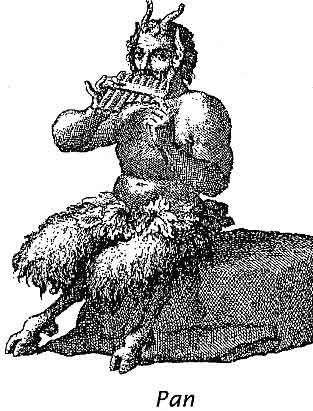














































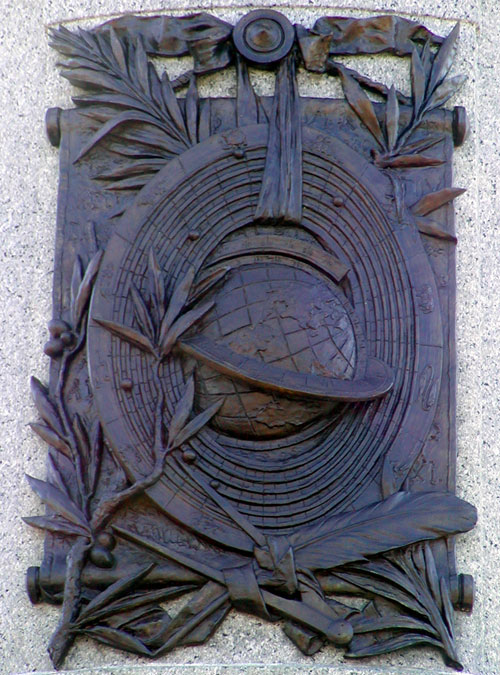







































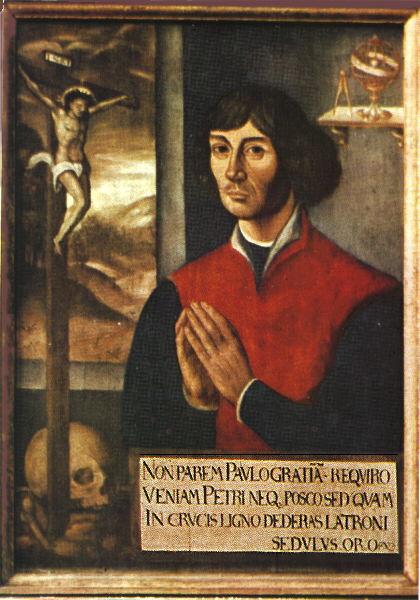















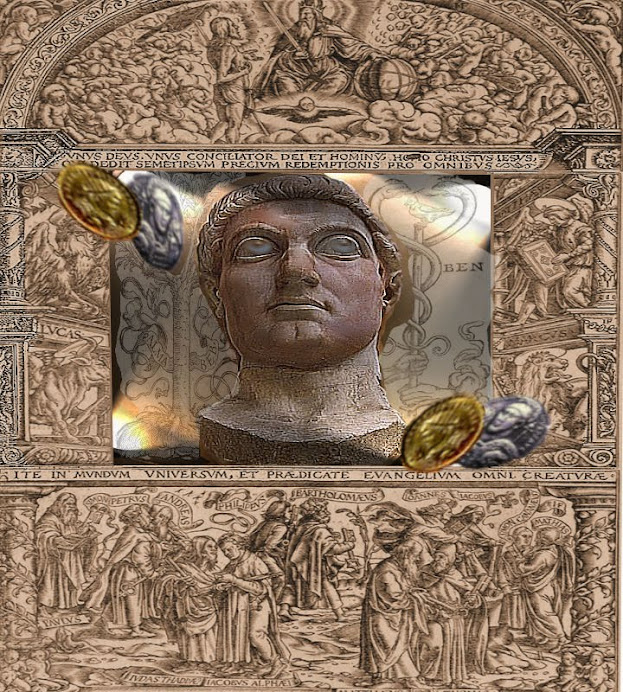



















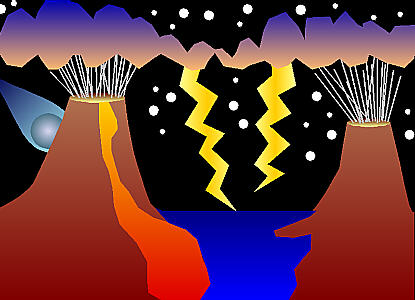


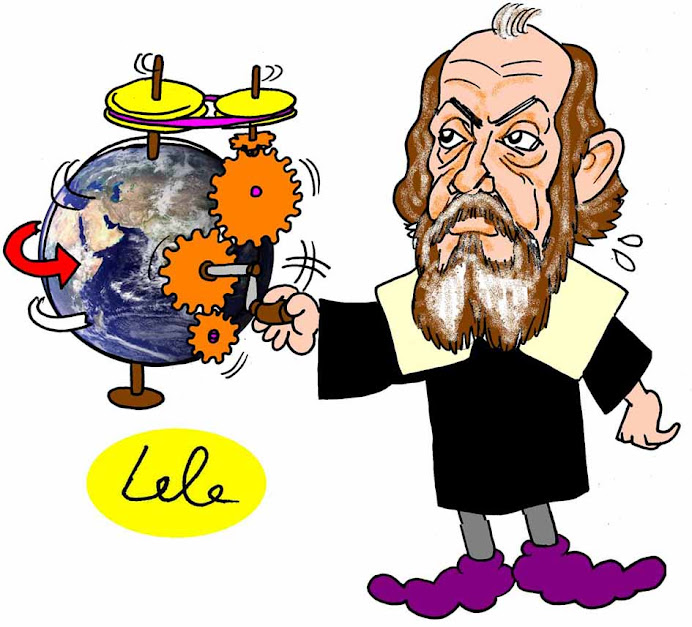













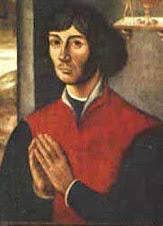.jpg)



















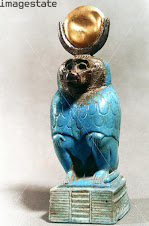








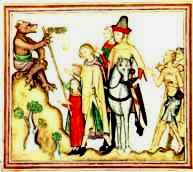

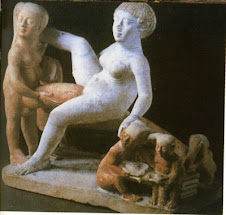











.jpg)





























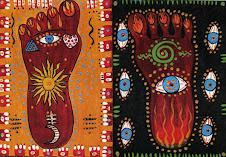
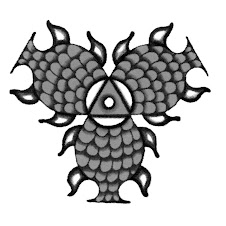











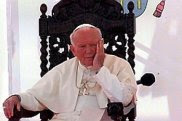















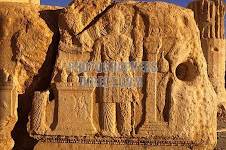
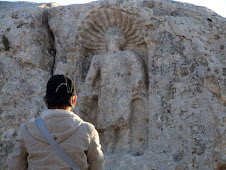






.gif)































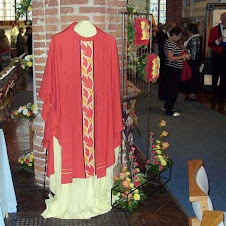




















































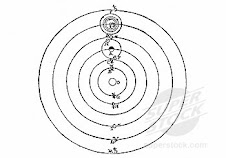

.jpg)













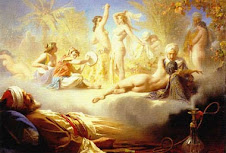
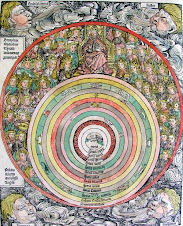












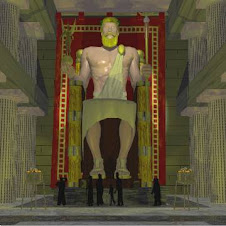


















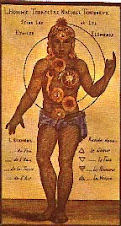






















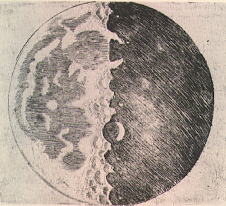




















































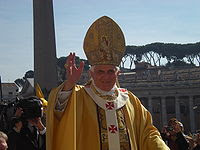

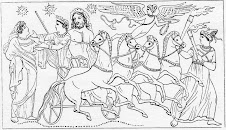








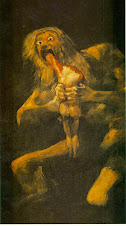




















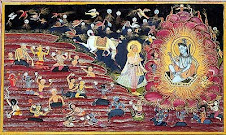

















++of+the+Sun+god..jpg)

